
We explain and teach technology, solve tech problems and help you make gadget buying decisions.

How to View Safari Tabs From Another iPhone or iPad
Maria is a Content Writer with a keen interest in Technology and Productivity Tools. Her articles can be found on sites such as Onlinetivity and Delesign. Outside of work, you can find her mini-blogging about her life on social media.
If you have multiple Apple devices, for example, an iPhone and an iPad, there is a high likelihood that you have different apps and activities ongoing with them. However, this does not mean those activities are restricted to the devices they originate from. For example, with the Safari app, Apple has a feature that lets you keep tabs and tab groups updated across devices. That is, if you are using Safari on your iPad and have tabs open, you can also view these Safari tabs on your iPhone.
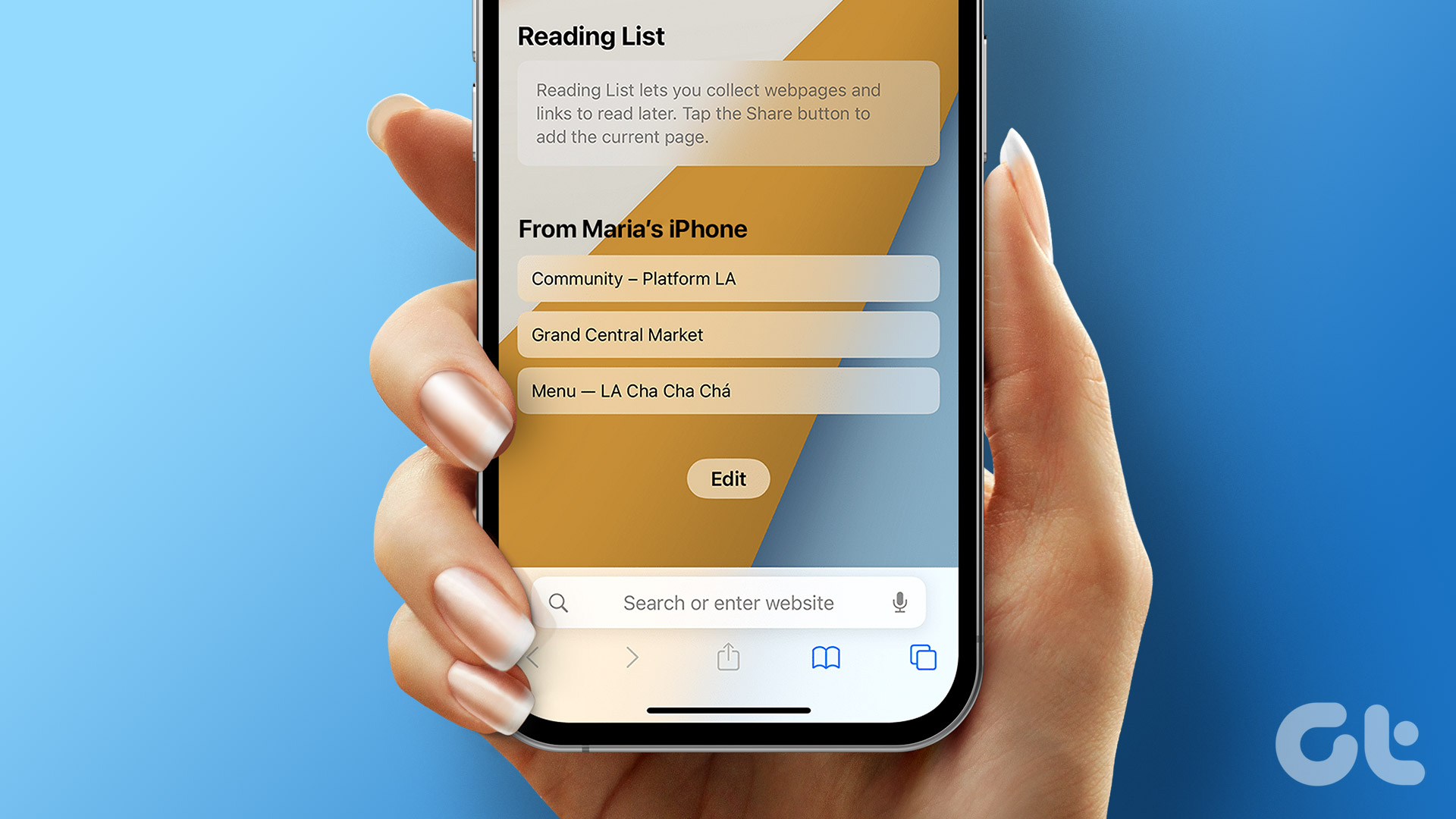
However, Apple devices users need to satisfy certain conditions: signing in to iCloud with the same Apple ID across devices. Also, you’ll need to enable iCloud tabs on the Safari start page and in iCloud Settings. Here’s how to do so:
How to Sign In With Your Apple ID
To use most Apple services such as the App Store, Apple Music, iCloud, etc., Apple users must sign in with their Apple IDs. In most cases, this is usually done during the setup of the Apple device. If you aren’t signed in during set up, here’s how you can sign in from Settings.
Step 1: Launch the Settings app from your iPhone or iPad.
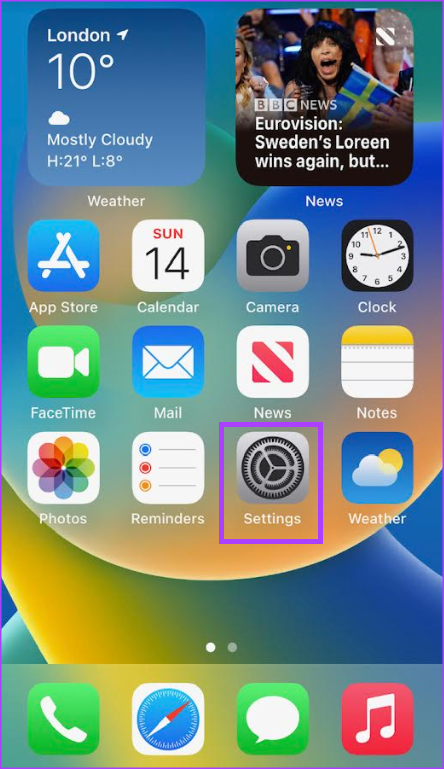
Step 2: Tap Sign in to your iPhone at the top of the page.

Step 3: Enter your Apple ID and password to complete sign-in.

When you scroll to the bottom of the Apple ID page, you can see the option to sign out.
How to Enable iCloud Safari Settings
A second condition that your device needs to meet view your Safari tabs across Apple devices is turning on Safari in your iCloud settings. This ensures your Safari tabs get synced to iCloud, making them easily accessible from any location. Here’s how to do so:
Step 2: Tap your Apple ID at the top of the page.
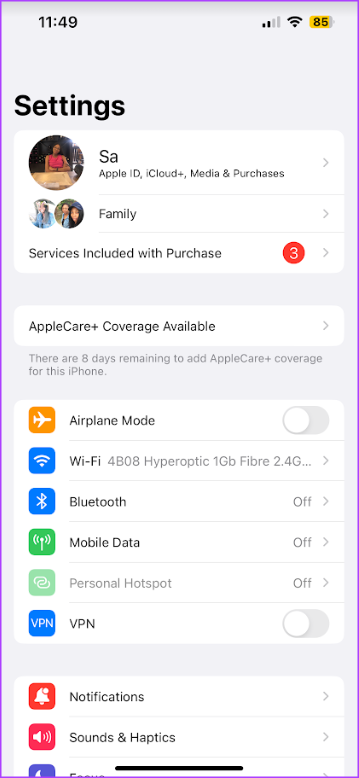
Step 3: Tap the iCloud option.
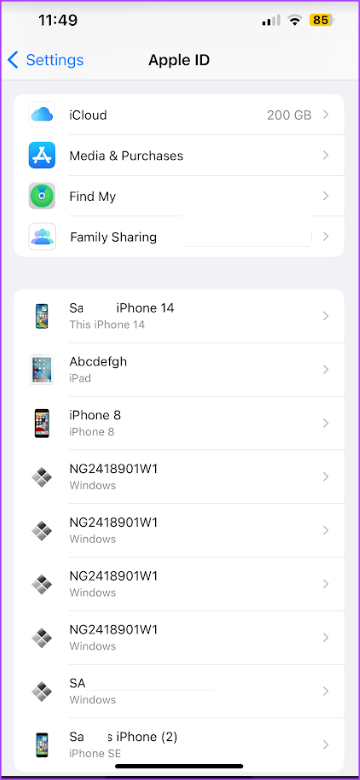
Step 4: Under the Apps Using iCloud setting, tap Show All.
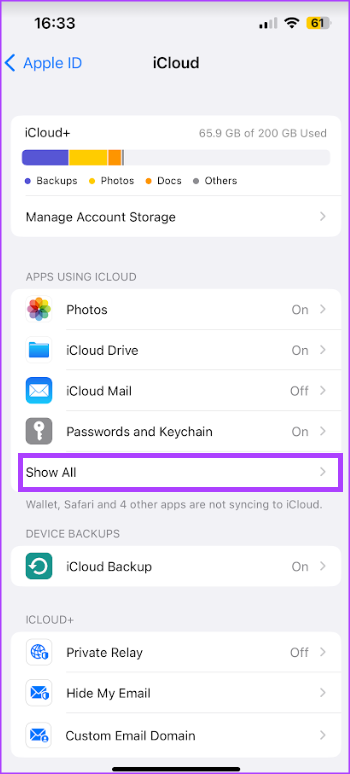
Step 5: Scroll down to the Safari option and tap the toggle beside it.
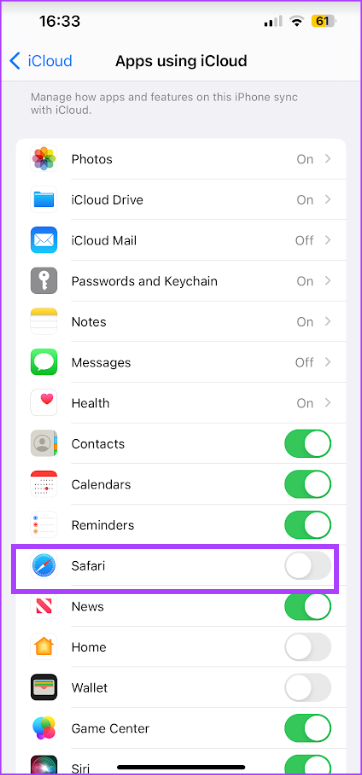
Step 6: Tap Merge when asked what you want to do with your iPhone’s existing local Safari data.
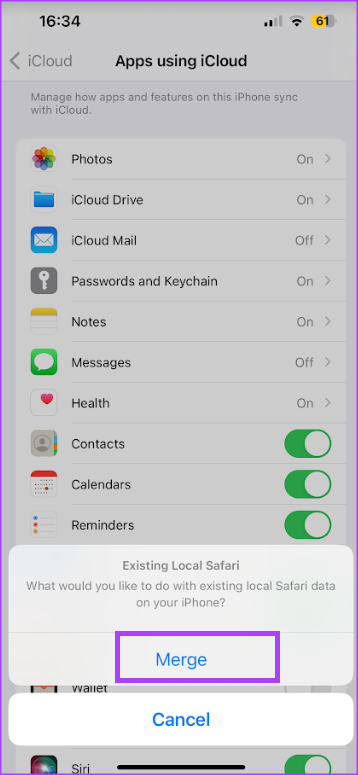
How to Enable iCloud Tabs From the Safari Start Page
With iCloud Tabs turned on in the Safari Settings , your Safari tabs are stored in the cloud. However, to view the open tabs across your iPhone or iPad, you also need to enable iCloud tabs. The option is available on the Safari start page. Here’s how to do so:
Step 1: Tap the Safari app on your iPhone or iPad’s home screen.
Step 2: Scroll to the bottom of the Safari tab and tap Edit to view the Customize Start Page.
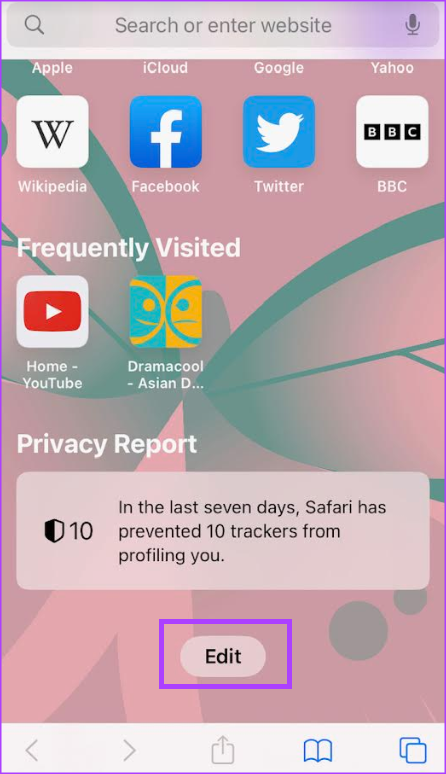
Step 3: Tap the toggle beside the iCloud tabs option to enable it.
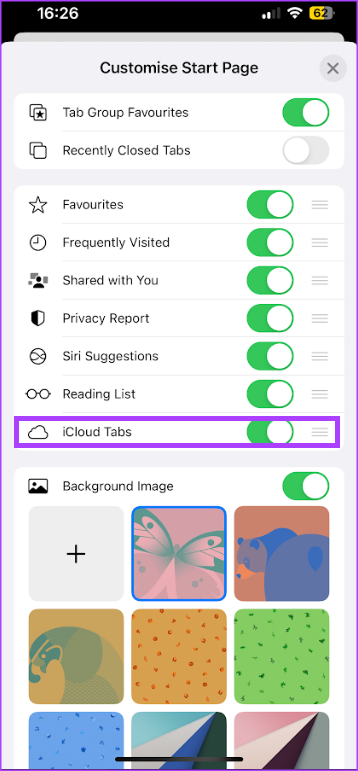
By tapping the toggle beside the iCloud tabs option, Safari will show open tabs from your other Apple devices.
How to View Open Tabs on Other Apple Devices
With iCloud tabs and iCloud sync enabled on Safari, here’s how to view open tabs across your Apple devices:
Step 2: Tap the tab icon on Safari.
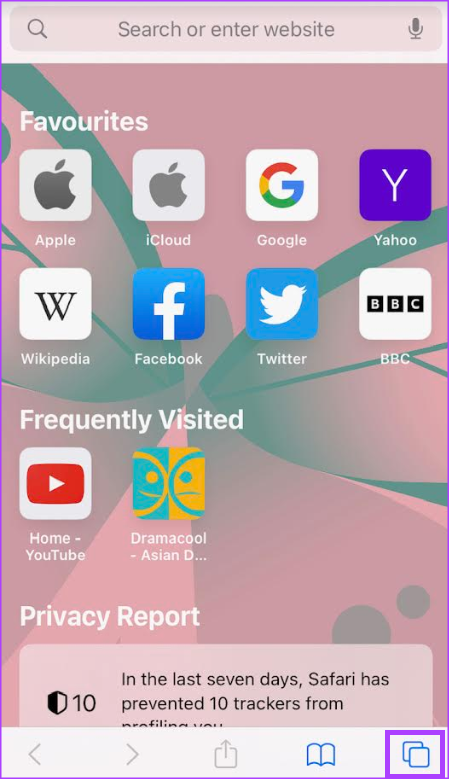
Step 3: Tap the + sign to open the Safari Start Page.
Step 4: Scroll to the bottom of the Safari Start Page, and you’ll need to see the name of your other Apple device.
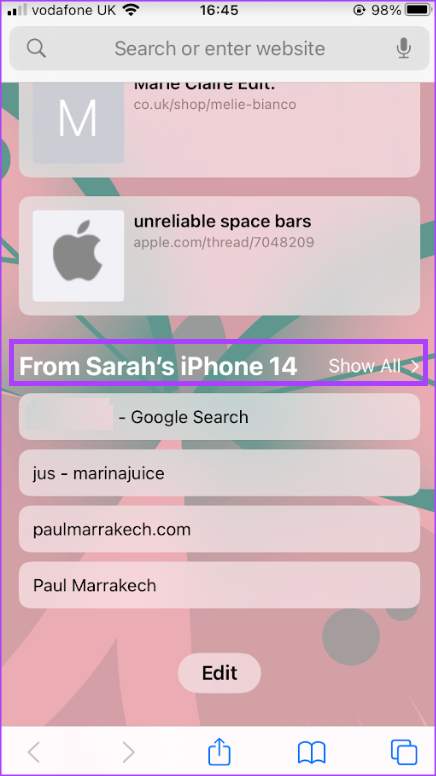
Step 5: Tap Show All to view all open tabs.
How to Close Open Tabs on Other Apple Devices
Apart from viewing the open tabs across your Apple devices, you can also close them. Here’s how to do so:
Step 6: Touch and hold down the tab to launch a menu.
Step 7: Tap Close from the menu to close the tab.
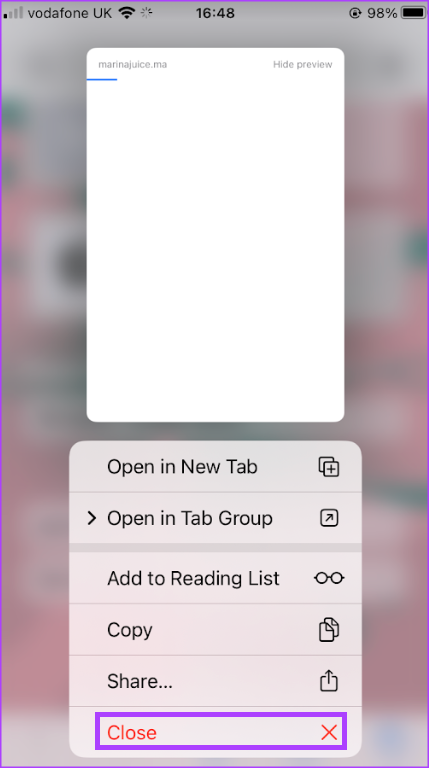
Clearing Safari Browsing History
With iCloud sync turned on, you can access all your browsing history across all your devices. At the same time, you can clear the browsing history of your individual devices or all your devices simultaneously.
Was this helpful?
Last updated on 31 May, 2023
The above article may contain affiliate links which help support Guiding Tech. However, it does not affect our editorial integrity. The content remains unbiased and authentic.
Leave a Reply Cancel reply
Your email address will not be published. Required fields are marked *
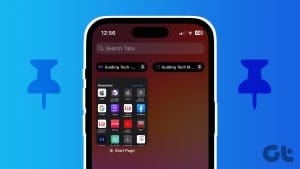
The article above may contain affiliate links which help support Guiding Tech. The content remains unbiased and authentic and will never affect our editorial integrity.
DID YOU KNOW
Maria Victoria
More in ios.
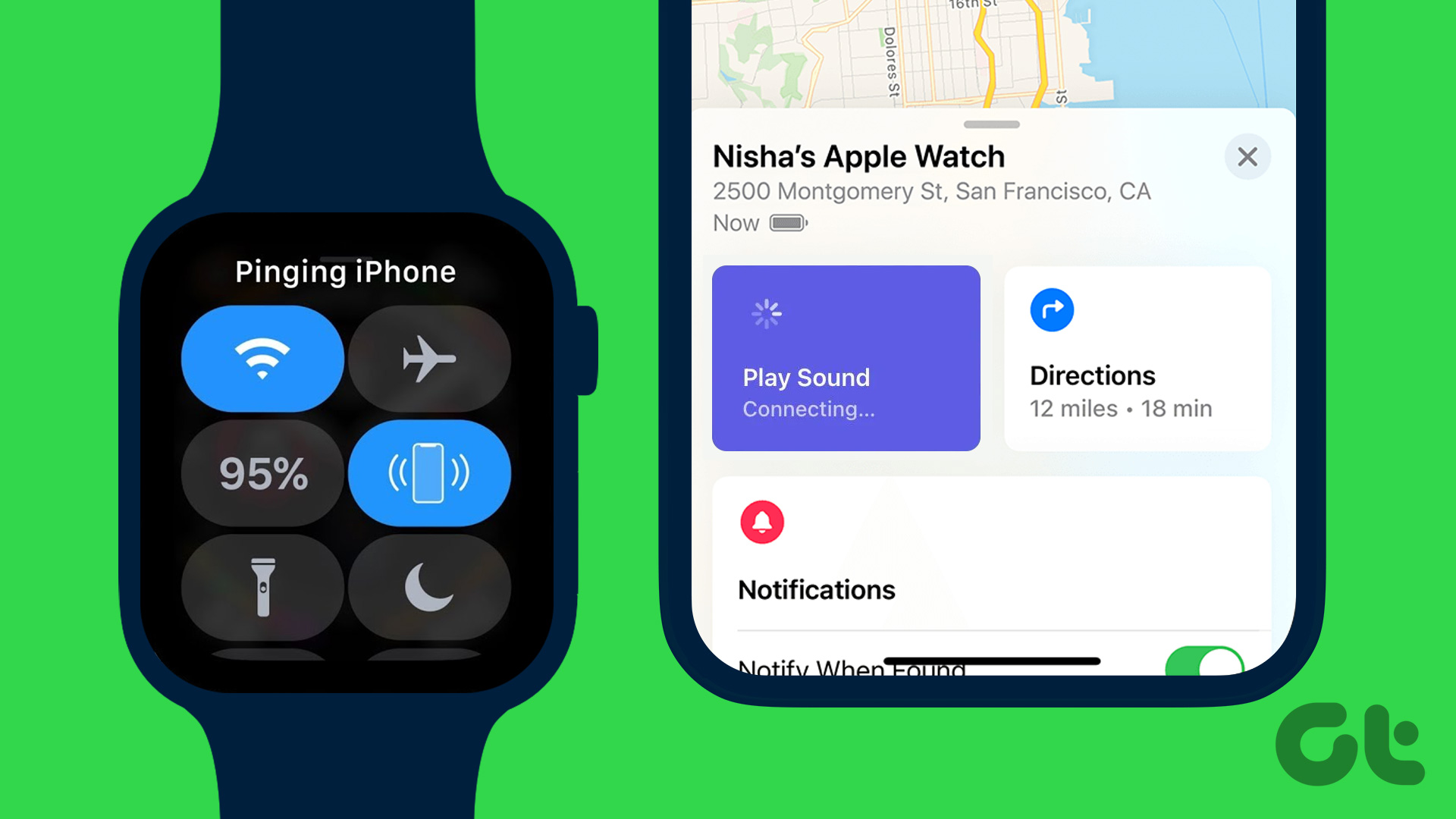
How to Ping Apple Watch from iPhone and Vice Versa
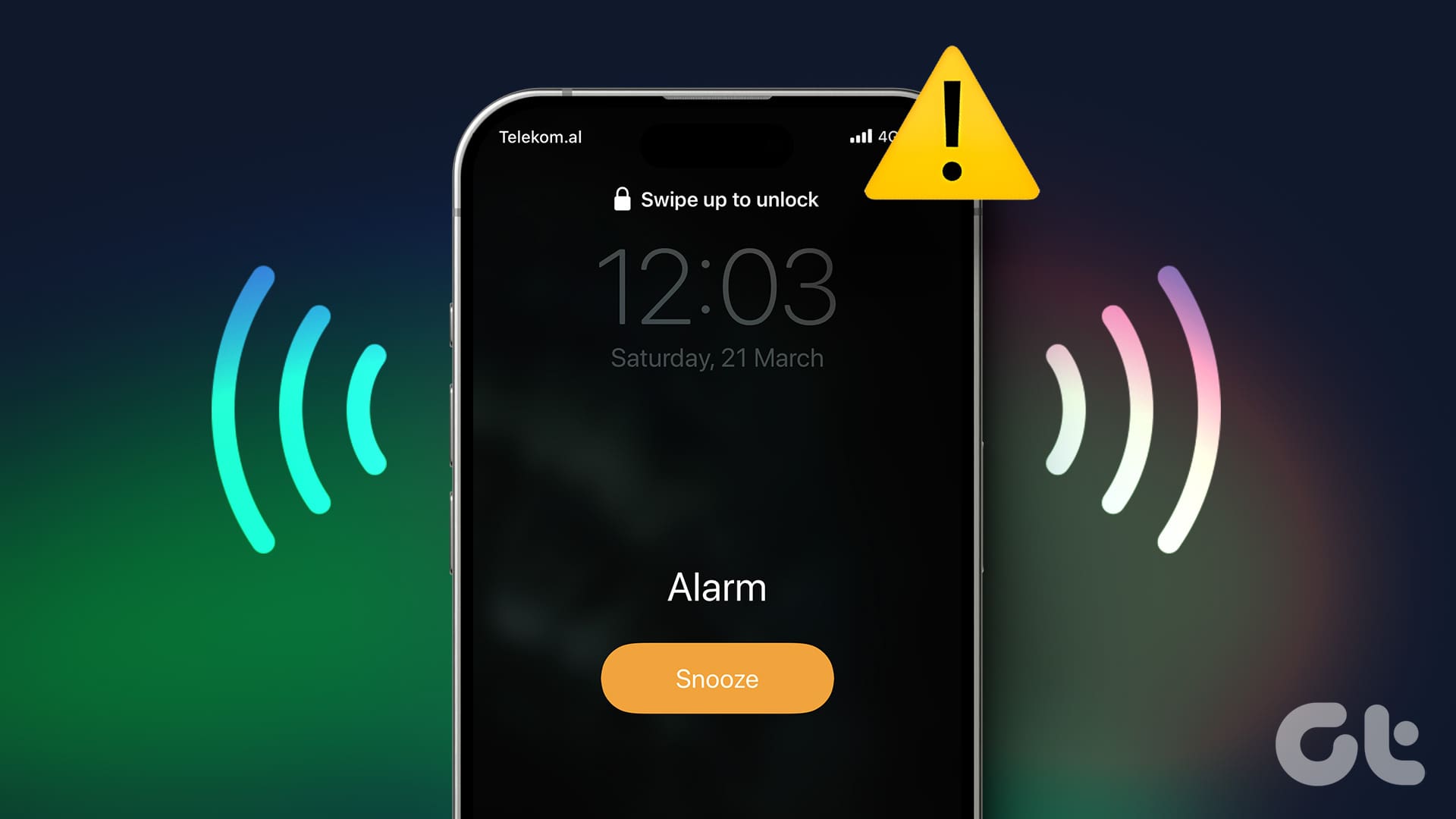
5 Ways to Fix Low or Loud Alarm Volume on iPhone
Join the newsletter.
Get Guiding Tech articles delivered to your inbox.
iPad User Guide
- Setup basics
- Make your iPad your own
- Keep in touch with friends and family
- Customize your workspace
- Supported models
- iPad mini (5th generation)
- iPad mini (6th generation)
- iPad (5th generation)
- iPad (6th generation)
- iPad (7th generation)
- iPad (8th generation)
- iPad (9th generation)
- iPad (10th generation)
- iPad Air (3rd generation)
- iPad Air (4th generation)
- iPad Air (5th generation)
- iPad Pro 9.7-inch
- iPad Pro 10.5-inch
- iPad Pro 11-inch (1st generation)
- iPad Pro 11-inch (2nd generation)
- iPad Pro 11-inch (3rd generation)
- iPad Pro 11-inch (4th generation)
- iPad Pro 12.9-inch (1st generation)
- iPad Pro 12.9-inch (2nd generation)
- iPad Pro 12.9-inch (3rd generation)
- iPad Pro 12.9-inch (4th generation)
- iPad Pro 12.9-inch (5th generation)
- iPad Pro 12.9-inch (6th generation)
- What’s new in iPadOS 16
- Turn on and set up iPad
- Wake and unlock
- Set up cellular service
- Connect to the internet
- Apple ID settings
- Turn iCloud features on or off
- Subscribe to iCloud+
- Find settings
- Set up mail, contacts, and calendar accounts
- Learn the meaning of the status icons
- Charge the battery
- Show the battery percentage
- Check battery usage
- Download or bookmark the user guide
- Learn basic gestures
- Learn advanced gestures
- Adjust the volume
- Find your apps in App Library
- Switch between apps
- Zoom an app to fill the screen
- Quit and reopen an app
- Dictate text
- Type with the onscreen keyboard
- Use a split keyboard
- Select and edit text
- Use predictive text
- Use text replacements
- Add or change keyboards
- Drag and drop
- Open two items in Split View
- Switch an app window to Slide Over
- View an app’s windows and workspaces
- Multitask with Picture in Picture
- Move, resize, and organize windows
- Access features from the Lock Screen
- Perform quick actions
- Search with iPad
- Use AirDrop to send items
- Take a screenshot or screen recording
- Draw in apps
- Add a description, a signature, and more to an image
- Zoom in or magnify in Markup
- Get information about your iPad
- View or change cellular data settings
- Travel with iPad
- Change or turn off sounds
- Change the wallpaper
- Adjust the screen brightness and color balance
- Magnify the screen
- Change the name of your iPad
- Change the date and time
- Change the language and region
- Organize your apps in folders
- Add widgets
- Move apps and widgets on the Home Screen
- Remove apps
- Use and customize Control Center
- Change or lock the screen orientation
- View and respond to notifications
- Change notification settings
- Set up a focus
- Allow or silence notifications for a Focus
- Turn a Focus on or off
- Subscribe to Apple Arcade
- Play with friends in Game Center
- Connect a game controller
- Use App Clips
- Manage purchases, subscriptions, settings, and restrictions
- Install and manage fonts
- Buy books and audiobooks
- Annotate books
- Access books on other Apple devices
- Listen to audiobooks
- Set reading goals
- Organize books
- Create and edit events in Calendar
- Send invitations
- Reply to invitations
- Change how you view events
- Search for events
- Customize your calendar
- Keep track of events
- Use multiple calendars
- Use the Holidays calendar
- Share iCloud calendars
- Take photos
- Take a selfie
- Take a Portrait mode selfie
- Take videos
- Change advanced camera settings
- Adjust HDR camera settings
- View, share, and print photos
- Use Live Text
- Scan a QR code
- See the world clock
- Set an alarm
- Use the timer or stopwatch
- Add and use contact information
- Edit contacts
- Add your contact info
- Use other contact accounts
- Hide duplicate contacts
- Set up FaceTime
- Create a FaceTime link
- Make and receive calls
- Take a Live Photo
- Turn on Live Captions in a FaceTime call
- Use other apps during a call
- Make a Group FaceTime call
- View participants in a grid
- Use SharePlay to watch, listen, and play together
- Share your screen
- Hand off a FaceTime call to another device
- Change the video settings
- Change the audio settings
- Add camera effects
- Leave a call or switch to Messages
- Block unwanted callers
- Connect external devices or servers
- View and modify files and folders
- Organize files and folders
- Set up iCloud Drive
- Share files and folders in iCloud Drive
- Share your location
- Add or remove a friend
- Locate a friend
- Get notified when friends change their location
- Notify a friend when your location changes
- Add your iPad
- Get notified if you leave a device behind
- Locate a device
- Mark a device as lost
- Erase a device
- Remove a device
- Add an AirTag
- Add a third-party item
- Get notified if you leave an item behind
- Locate an item
- Mark an item as lost
- Remove an item
- Adjust map settings
- Get started with Freeform
- Create a Freeform board
- Access boards on other devices
- Lines and shapes
- Sticky notes
- Photos and videos
- Scans, links, and other files
- Accessible descriptions
- Apply consistent styles
- Position items on a board
- Search Freeform boards
- Share and collaborate
- Delete boards
- Intro to Home
- Upgrade to the new Home architecture
- Set up accessories
- Control accessories
- Control your home using Siri
- Configure HomePod
- Control your home remotely
- Create and use scenes
- Create an automation
- Configure cameras
- Face Recognition
- Configure a router
- Share controls with others
- Add more homes
- Get music, movies, and TV shows
- Get ringtones
- Manage purchases and settings
- Magnify nearby objects
- Create activities
- Change settings
- Detect people around you
- Detect doors around you
- Receive image descriptions of your surroundings
- Set up shortcuts for Detection Mode
- Add and remove email accounts
- Set up a custom email domain
- Check your email
- Unsend email with Undo send
- Reply to and forward emails
- Save an email draft
- Add email attachments
- Download email attachments
- Annotate email attachments
- Set email notifications
- Search for email
- Organize your email in mailboxes
- Flag emails
- Filter emails
- Use Hide My Email
- Use Mail Privacy Protection
- Change email settings
- Delete and recover emails
- Add a Mail widget to your Home Screen
- Print emails
- Keyboard shortcuts
- Search for places
- Find nearby attractions, restaurants, and services
- Get information about places
- Mark places
- Share places
- Rate places
- Save favorite places
- Explore new places with Guides
- Organize places in My Guides
- Get traffic and weather info
- Delete significant locations
- Find your Maps settings
- Use Siri, Maps, and the Maps widget to get directions
- Select other route options
- Share your ETA
- Find stops along your route
- View a route overview or a list of turns
- Change settings for spoken directions
- Get driving directions
- Report traffic incidents
- Get cycling directions
- Get walking directions
- Get transit directions
- Delete recent directions
- Look around places
- Take Flyover tours in Maps
- View and save measurements
- Measure a person’s height
- Set up Messages
- Send and reply to messages
- Unsend and edit messages
- Keep track of messages and conversations
- Forward and share messages
- Set up a group conversation
- Add photos and video
- Send and receive content
- Watch, listen, or play together using SharePlay
- Collaborate on projects
- Animate messages
- Use iMessage apps
- Send a Digital Touch effect
- Send recorded audio messages
- Send, receive, and request money with Apple Cash
- Change notifications
- Block, filter, and report messages
- Delete messages
- Recover deleted messages
- View albums, playlists, and more
- Queue up your music
- Listen to broadcast radio
- Subscribe to Apple Music
- Listen to lossless music
- Listen to Dolby Atmos music
- Apple Music Sing
- Find new music
- Add music and listen offline
- Get personalized recommendations
- Listen to radio
- Search for music
- Create playlists
- See what your friends are listening to
- Use Siri to play music
- Listen to music with Apple Music Voice
- Change the way music sounds
- Get started with News
- Use News widgets
- See news stories chosen just for you
- Read stories
- Follow your favorite teams with My Sports
- Subscribe to Apple News+
- Browse and read Apple News+ stories and issues
- Download Apple News+ issues
- Search for news stories
- Save news stories for later
- Subscribe to news channels
- Add or remove accounts
- Create and format notes
- Draw or write
- Scan text and documents
- Add photos, videos, and more
- Create Quick Notes
- Search notes
- Organize in folders
- Organize with tags
- Use Smart Folders
- Change Notes settings
- Use keyboard shortcuts
- Delete, share, or copy a photo
- View and edit Photo Booth photos in the Photos app
- View photos and videos
- Play videos and slideshows
- Delete or hide photos and videos
- Edit photos and videos
- Trim video length and adjust slow motion
- Edit Live Photos
- Edit Cinematic videos
- Edit Portrait mode photos
- Use photo albums
- Edit and organize albums
- Filter and sort photos and videos in albums
- Duplicate and copy photos and videos
- Merge duplicate photos
- Search in Photos
- Find and identify people in Photos
- Browse photos by location
- Share photos and videos
- Share long videos
- View photos and videos shared with you
- Use Live Text to interact with content in a photo or video
- Use Visual Look Up to identify objects in your photos
- Lift a subject from the photo background
- Watch memories
- Personalize your memories
- Manage memories and featured photos
- Use iCloud Photos
- Use iCloud Shared Albums
- Set up or join an iCloud Shared Photo Library
- Add content to an iCloud Shared Photo Library
- Use iCloud Shared Photo Library
- Import photos and videos
- Print photos
- Find podcasts
- Listen to podcasts
- Follow your favorite podcasts
- Organize your podcast library
- Download, save, and share podcasts
- Subscribe to podcasts
- Change download settings
- Set up accounts
- Add items to a list
- Edit and manage a list
- Search and organize lists
- Work with templates
- Use Smart Lists
- Change Reminders settings
- Print reminders
- Browse the web
- Customize your Safari settings
- Change the layout
- Search for websites
- Open and close tabs
- Organize your tabs with Tab Groups
- View your tabs from another device
- Share Tab Groups
- Bookmark favorite webpages
- Save pages to a Reading List
- Find links shared with you
- Annotate and save a webpage as a PDF
- Automatically fill in forms
- Get extensions
- Hide ads and distractions
- Clear your cache
- Browse the web privately
- Use passkeys in Safari
- Check stocks
- Manage multiple watchlists
- Read business news
- Add earnings reports to your calendar
- Add a Stocks widget to your Home Screen
- Translate text, voice, and conversations
- Translate text in apps
- Translate with the camera view
- Connect apps and add your TV provider
- Subscribe to Apple TV+, MLS Season Pass, and Apple TV channels
- Get shows, movies, and more
- Watch sports
- Watch Major League Soccer with MLS Season Pass
- Control playback
- Watch together using SharePlay
- Manage your library
- Change the settings
- Make a recording
- Play it back
- Edit or delete a recording
- Keep recordings up to date
- Organize recordings
- Search for or rename a recording
- Share recordings
- Duplicate a recording
- Check the weather
- Check the weather in other locations
- View weather maps
- Manage weather notifications
- Add a Weather widget to your Home Screen
- Learn the weather icons
- Find out what Siri can do
- Tell Siri about yourself
- Have Siri announce calls and notifications
- Add Siri Shortcuts
- About Siri Suggestions
- Change Siri settings
- Set up Family Sharing
- Add Family Sharing members
- Remove Family Sharing members
- Share subscriptions
- Share purchases
- Share locations with family and locate lost devices
- Set up Apple Cash Family and Apple Card Family
- Set up parental controls
- Set up a child’s device
- View your Screen Time summary
- Set up Screen Time for yourself
- Set up Screen Time for a family member
- Get a report of your device use
- Set up Apple Pay
- Use Apple Pay in apps, App Clips, and Safari
- Use Apple Cash
- Use Apple Card
- Manage payment cards and activity
- Power adapter and charge cable
- Use AirPods
- Use EarPods
- Use headphone audio-level features
- Pair and charge Apple Pencil (2nd generation)
- Pair and charge Apple Pencil (1st generation)
- Enter text with Scribble
- Draw with Apple Pencil
- Take and mark up a screenshot with Apple Pencil
- Quickly write notes
- Preview tools and controls with Apple Pencil hover
- Wirelessly stream videos and photos to Apple TV or a smart TV
- Connect to a display with a cable
- HomePod and other wireless speakers
- iPad keyboards
- Switch between keyboards
- Enter characters with diacritical marks
- Use shortcuts
- Choose an alternative keyboard layout
- Change typing assistance options
- Connect Magic Trackpad
- Trackpad gestures
- Change trackpad settings
- Connect a mouse
- Mouse actions and gestures
- Change mouse settings
- External storage devices
- Bluetooth accessories
- Apple Watch with Fitness+
- Share your internet connection
- Make and receive phone calls
- Use iPad as a second display for Mac
- Use a keyboard and mouse or trackpad across your Mac and iPad
- Hand off tasks between devices
- Wirelessly stream video, photos, and audio to Mac
- Cut, copy, and paste between iPad and other devices
- Connect iPad and your computer with a cable
- Transfer files between devices
- Transfer files with email, messages, or AirDrop
- Automatically keep files up to date with iCloud
- Transfer files with an external storage device
- Use a file server to share files between your iPad and computer
- Share files with a cloud storage service
- Sync content or transfer files with the Finder or iTunes
- Get started with accessibility features
- Turn on and practice VoiceOver
- Change your VoiceOver settings
- Learn VoiceOver gestures
- Operate iPad when VoiceOver is on
- Control VoiceOver using the rotor
- Use the onscreen keyboard
- Write with your finger
- Use VoiceOver with an Apple external keyboard
- Use a braille display
- Type onscreen braille
- Customize gestures and keyboard shortcuts
- Use VoiceOver with a pointer device
- Use VoiceOver for images and videos
- Use VoiceOver in apps
- Display & Text Size
- Spoken Content
- Audio Descriptions
- AssistiveTouch
- Eye-tracking device
- Touch accommodations
- Call Audio Routing
- Face ID & Attention
- Intro to Switch Control
- Set up and turn on Switch Control
- Use Switch Control
- Voice Control
- Home or top button
- Apple TV Remote
- Pointer Control
- Apple Pencil
- Hearing devices
- Live Listen
- Sound recognition
- Mono audio and balance
- LED flash for alerts
- Headphone audio
- Background sounds
- Subtitles and captions
- Transcriptions for Intercom messages
- Live Captions (beta)
- Guided Access
- Accessibility shortcuts
- Per-app settings
- Use built-in privacy and security protections
- Set a passcode
- Set up Face ID
- Set up Touch ID
- Control access to information on the Lock Screen
- Keep your Apple ID secure
- Sign in with passkeys
- Sign in with Apple
- Automatically fill in strong passwords
- Change weak or compromised passwords
- View your passwords and related information
- Share passkeys and passwords securely with AirDrop
- Make your passkeys and passwords available on all your devices
- Automatically fill in verification codes
- Sign in with fewer CAPTCHA challenges on iPad
- Manage two-factor authentication for your Apple ID
- Use security keys
- Control app tracking permissions
- Control the location information you share
- Control access to information in apps
- Control how Apple delivers advertising to you
- Control access to hardware features
- Create and manage Hide My Email addresses
- Protect your web browsing with iCloud Private Relay
- Use a private network address
- Use Advanced Data Protection
- Lockdown Mode
- Turn iPad on or off
- Force restart iPad
- Update iPadOS
- Back up iPad
- Return iPad settings to their defaults
- Restore all content from a backup
- Restore purchased and deleted items
- Sell, give away, or trade in your iPad
- Install or remove configuration profiles
- Important safety information
- Important handling information
- Find more resources for software and service
- FCC compliance statement
- ISED Canada compliance statement
- Apple and the environment
- Class 1 Laser information
- Disposal and recycling information
- Unauthorized modification of iPadOS
- ENERGY STAR compliance statement
View your Safari tabs from another Apple device on iPad
View tabs that are open on your other Apple devices
To close a tab on another Apple device, touch and hold the link, then choose Close.
Keep tabs and Tab Groups updated across your devices
Note: To also see tabs open on your Mac, you must have Safari turned on in iCloud settings on your Mac, be signed in with the same Apple ID , and use two-factor authentication .
How To View Safari Tabs Across Your Apple Products
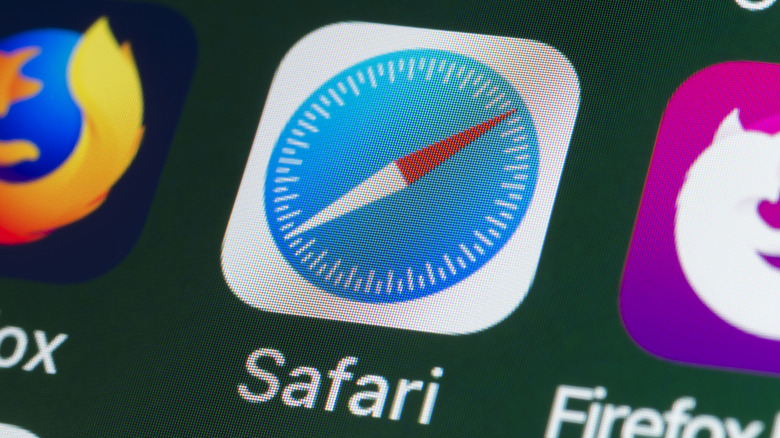
Sharing website links with others (or even yourself) is a common practice among internet users in these modern times, and it usually involves copying and pasting the URL across messages, texts, or emails. However, if you primarily use Apple devices like an iPhone, iPad, and MacBook, you have the option to share those addresses a bit more fluidly.
It requires a little bit of preemptive setup, and you have to use Apple's baked-in Safari web browser. More specifically, if you're using a Mac with macOS Mojave 10.14.3 and older, you'll need to make sure your iPhone or iPad is running iOS (or iPad OS) 12 or earlier. If your Mac uses macOS Mojave 10.14.4 or newer, the iPhone or iPad will need to have iOS or iPad OS 13 or newer installed.
But once everything is set up, you'll be able to browse websites to your heart's content on one device (say, an iPad), then send it over to another (like a MacBook) to continue from the exact page you left off. Think of it as a quick way to jump to a larger screen for viewing images or videos in more detail, changing over to a more portable platform when you need to head out but want to keep a specific page with you, or finding something you like on one device and moving over to the one that has your payment info saved. Here's how to get started.
Setting up iCloud tabs
None of this is going to work if you don't tell iCloud to let Safari share tabs across all the devices that are connected to it, so you'll need to take care of that before you start slinging links everywhere.
- On an iPhone, iPad, or iPod Touch, open the Settings app (it looks like a gear).
- Tap your profile name at the top of the Settings menu, then select iCloud.
- Find the Apps Using iCloud section, then locate Safari. You may have to tap the Show All option at the bottom of the list if you don't see it.
- Tap the toggle switch next to Safari (so that it turns green) to turn on iCloud sharing.
- On a Mac, click the Apple icon in the top-left corner of the screen and select System Settings (or System Preferences in macOS 12 and older).
- Select your Apple ID name, then click iCloud.
- Find the listing for Safari in the Apps Using iCloud section of the menu. If you don't see Safari, click the Show All button just below the app list.
- Click the toggle next to Safari (so that it turns green) to turn on iCloud sharing.
You'll need to repeat these steps across all of your Apple devices that you intend to share links with, but once it's done, you're all set to share websites freely between them.
Using and sharing tabs across Apple devices
With iCloud all set up for Safari, it's time to start sharing tabs.
- On an iPhone, iPad, or iPod Touch, open Safari and tap the Tabs button, then tap the Plus (+) icon to open a new tab.
- Any Safari tabs open on other connected devices will appear in the default Start Page for the new tab.
- Tap one of the tab links to open the tab on your device, or tap and hold the link and select Close when prompted to close the linked tab on the other device.
- On a Mac, open Safari and select the Bookmarks menu at the top of the screen, then choose Show Start Page.
- You'll see Safari tabs that are open on other connected devices from the Start Page by default.
- To open a linked tab on your Mac, just click it.
- To close a linked tab on a connected device from your Mac, press and hold Ctrl on the keyboard, click the link, then select Close Tab when prompted.
If you're unable to see open Safari tabs between your devices, go back and make sure that you're signed in with your Apple ID on all of them. If a different Apple ID is being used, you'll need to switch to the same one you're using for your other Apple devices.
How To Sync Safari Tabs Across Devices

- Software & Applications
- Browsers & Extensions
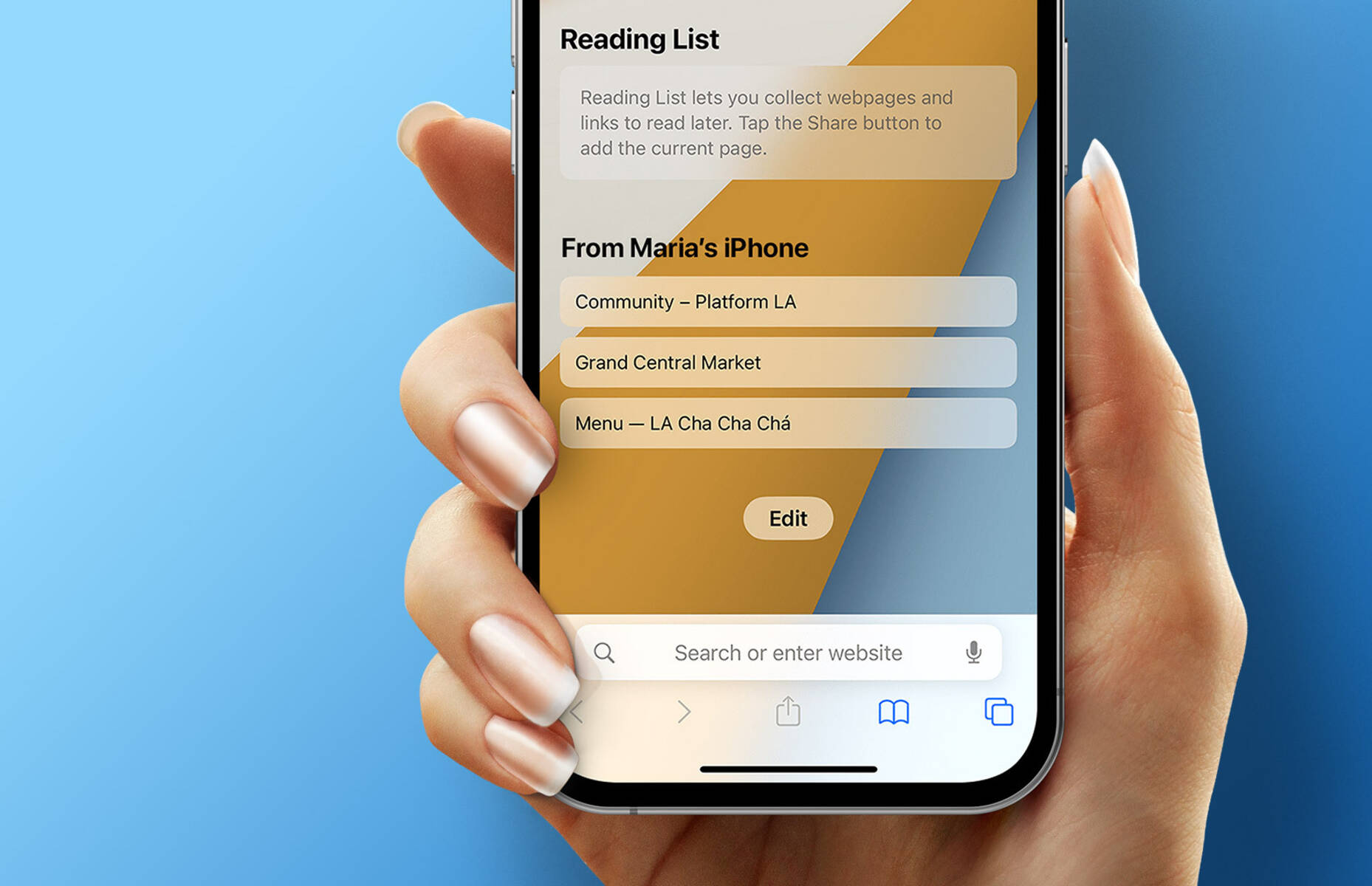
Introduction
Safari, Apple's native web browser, offers a seamless browsing experience across all your Apple devices. One of its most convenient features is the ability to sync tabs, allowing you to access the same webpages on your Mac, iPhone, and iPad effortlessly. Whether you're researching a topic on your Mac and want to continue reading on your iPhone while on the go, or you simply want to pick up where you left off on your iPad, Safari's tab syncing functionality ensures a smooth transition between devices.
In this comprehensive guide, we'll delve into the intricacies of syncing Safari tabs across your Apple devices. From setting up iCloud for Safari to troubleshooting common sync issues, you'll gain a thorough understanding of how to make the most of this convenient feature. So, whether you're a seasoned Safari user or just getting started with Apple's ecosystem, this guide will equip you with the knowledge and tools to seamlessly sync your browsing experience across all your devices. Let's dive in and unlock the full potential of Safari's tab syncing capabilities.
Setting Up iCloud for Safari
To begin harnessing the power of Safari's tab syncing feature, you need to ensure that iCloud is set up to sync Safari data across your devices. This involves enabling Safari within iCloud settings to seamlessly share your browsing history, bookmarks, and open tabs across your Apple devices.
Here's how to set up iCloud for Safari:
- Open System Preferences and click on Apple ID.
- Select iCloud from the sidebar.
- Ensure that the Safari option is checked. This allows Safari to sync your browsing data across your devices.
On iPhone and iPad:
- Open the Settings app and tap on your Apple ID at the top.
- Select iCloud and ensure that Safari is toggled on. This enables Safari to sync your browsing data across your iPhone and iPad.
Once iCloud is set up to sync Safari data, you're ready to seamlessly access your browsing history, bookmarks, and open tabs across all your Apple devices. This ensures a cohesive browsing experience, allowing you to effortlessly transition between devices without losing track of your open tabs and saved webpages.
By following these simple steps to set up iCloud for Safari, you'll unlock the full potential of Safari's tab syncing capabilities, enhancing your browsing experience and productivity across your Mac, iPhone, and iPad.
Syncing Safari Tabs on Mac
Syncing Safari tabs on your Mac is a straightforward process that allows you to seamlessly access open tabs from your other Apple devices. Whether you're researching a topic on your iPhone or iPad and want to continue on your Mac, or you simply want to pick up where you left off, Safari's tab syncing feature ensures a smooth transition between devices.
To sync Safari tabs on your Mac, follow these simple steps:
Ensure iCloud Sync is Enabled :
- Open Safari on your Mac and click on "Safari" in the top menu bar.
- Select "Preferences" and navigate to the "General" tab.
- Ensure that the "Safari" option is checked under iCloud preferences. This allows Safari to sync your browsing data, including open tabs, with your other Apple devices.
Accessing Synced Tabs :
- Once iCloud sync is enabled, you can access your synced tabs by clicking on the "Show All Tabs" button in the Safari toolbar. This button looks like two overlapping squares and is located on the right side of the Safari toolbar.
- Clicking on "Show All Tabs" will display a grid of all open tabs from your other synced devices, allowing you to seamlessly pick up where you left off.
Continuity and Handoff :
- If you have multiple Apple devices nearby, you can take advantage of Continuity and Handoff features to seamlessly transition your browsing session from one device to another.
- For example, if you're viewing a webpage on your iPhone and want to continue reading on your Mac, simply click on the Safari icon in the Dock of your Mac to instantly open the same webpage, thanks to the Handoff feature.
By following these steps, you can effortlessly sync Safari tabs on your Mac, ensuring that your browsing experience remains consistent across all your Apple devices. Whether you're working on a project, conducting research, or simply enjoying leisurely browsing, Safari's tab syncing feature enhances your productivity and convenience by seamlessly integrating your browsing experience across your Mac, iPhone, and iPad.
Syncing Safari Tabs on iPhone and iPad
Syncing Safari tabs on your iPhone and iPad allows for a seamless browsing experience across all your Apple devices. Whether you're researching a topic on your Mac and want to continue reading on your iPhone while on the go, or you simply want to pick up where you left off on your iPad, Safari's tab syncing functionality ensures a smooth transition between devices.
To sync Safari tabs on your iPhone and iPad, follow these simple steps:
- Open the Settings app on your iPhone or iPad and tap on your Apple ID at the top.
- Select "iCloud" and ensure that Safari is toggled on. This enables Safari to sync your browsing data, including open tabs, across your iPhone and iPad.
- Once iCloud sync is enabled, you can access your synced tabs by tapping the "Tabs" button in Safari. This button is located in the lower-right corner of the Safari interface and displays the number of open tabs.
- Tapping on the "Tabs" button will reveal a list of all open tabs from your other synced devices, allowing you to seamlessly continue your browsing session.
Handoff and Continuity :
- Apple's Handoff feature allows for a seamless transition of your browsing session from one device to another. For instance, if you're viewing a webpage on your iPad and want to continue reading on your iPhone, simply swipe up from the bottom of the iPhone's lock screen to open the same webpage, thanks to the Handoff feature.
By following these steps, you can effortlessly sync Safari tabs on your iPhone and iPad, ensuring that your browsing experience remains consistent across all your Apple devices. Whether you're working on a project, conducting research, or simply enjoying leisurely browsing, Safari's tab syncing feature enhances your productivity and convenience by seamlessly integrating your browsing experience across your Mac, iPhone, and iPad.
This seamless integration of browsing data across devices not only saves time but also ensures that you can easily pick up where you left off, regardless of which Apple device you are using. With Safari's tab syncing feature, your browsing experience becomes more fluid and adaptable to your dynamic lifestyle, allowing you to transition between devices without missing a beat.
Troubleshooting Sync Issues
Despite the seamless nature of Safari's tab syncing feature, occasional sync issues may arise, disrupting the continuity of your browsing experience across devices. When faced with sync issues, it's essential to troubleshoot and resolve them promptly to ensure that your browsing data remains consistent and accessible across all your Apple devices.
Here are some common troubleshooting steps to address sync issues with Safari tabs:
Check iCloud Status
Ensure that iCloud is functioning properly and that there are no service disruptions. You can check the status of iCloud services on Apple's System Status page. If there are any reported issues with iCloud, it's advisable to wait until the service is restored before attempting to troubleshoot further.
Verify iCloud Settings
Double-check the iCloud settings on all your devices to ensure that Safari syncing is enabled. Sometimes, settings may inadvertently change or become disabled, leading to sync issues. By verifying that Safari syncing is enabled within iCloud settings, you can rule out any potential configuration issues.
Restart Devices
A simple yet effective troubleshooting step is to restart the devices experiencing sync issues. This can help refresh the connection to iCloud and resolve any temporary glitches that may be impeding the syncing process.
Update Software
Ensure that your Mac, iPhone, and iPad are running the latest version of their respective operating systems. Software updates often include bug fixes and improvements that can address sync-related issues, so keeping your devices up to date is crucial for maintaining seamless sync functionality.
Clear Safari Cache
On your Mac, clearing the cache in Safari can help resolve sync issues related to browsing data. Navigate to Safari's preferences, select the "Privacy" tab, and click on "Manage Website Data" to clear the cache. On iPhone and iPad, you can clear Safari's cache by going to Settings > Safari > Clear History and Website Data.
Sign Out and Sign Back In
If sync issues persist, signing out of iCloud on the affected devices and signing back in can sometimes resolve underlying synchronization problems. This process can reestablish the connection to iCloud and refresh the syncing mechanism.
By following these troubleshooting steps, you can effectively address sync issues with Safari tabs and restore the seamless syncing functionality across your Mac, iPhone, and iPad. Maintaining consistent and reliable sync capabilities ensures that your browsing experience remains uninterrupted, allowing you to seamlessly transition between devices without losing track of your open tabs and saved webpages.
In conclusion, Safari's tab syncing feature, powered by iCloud, offers a seamless and integrated browsing experience across all your Apple devices. By setting up iCloud for Safari and enabling tab syncing, users can effortlessly access their browsing history, bookmarks, and open tabs on their Mac, iPhone, and iPad. This level of synchronization not only enhances productivity but also ensures a consistent browsing experience, allowing users to seamlessly transition between devices without losing track of their open tabs and saved webpages.
The convenience of syncing Safari tabs becomes particularly evident in various scenarios. Whether you're conducting research, working on a project, or simply enjoying leisurely browsing, the ability to seamlessly continue your browsing session from one device to another adds a layer of adaptability to your dynamic lifestyle. For instance, you can start reading an article on your Mac, continue on your iPhone while commuting, and pick up where you left off on your iPad when you arrive home, all without missing a beat.
Furthermore, the Handoff and Continuity features enrich the tab syncing experience, allowing for a smooth transition of browsing sessions from one device to another. This seamless integration of browsing data across devices not only saves time but also ensures that users can easily pick up where they left off, regardless of which Apple device they are using.
However, despite the robust nature of Safari's tab syncing, occasional sync issues may arise. In such cases, troubleshooting steps such as verifying iCloud settings, restarting devices, updating software, and clearing Safari cache can help resolve any synchronization hiccups, ensuring that the browsing experience remains consistent and uninterrupted.
In essence, Safari's tab syncing feature, when utilized in conjunction with iCloud, exemplifies the seamless integration of browsing data across devices, reflecting Apple's commitment to enhancing user experience within its ecosystem. Whether for work, study, or leisure, the ability to seamlessly transition between devices while maintaining access to your browsing history and open tabs underscores the adaptability and convenience that Safari's tab syncing brings to users' digital lives.
Leave a Reply Cancel reply
Your email address will not be published. Required fields are marked *
Save my name, email, and website in this browser for the next time I comment.
- Crowdfunding
- Cryptocurrency
- Digital Banking
- Digital Payments
- Investments
- Console Gaming
- Mobile Gaming
- VR/AR Gaming
- Gadget Usage
- Gaming Tips
- Online Safety
- Software Tutorials
- Tech Setup & Troubleshooting
- Buyer’s Guides
- Comparative Analysis
- Gadget Reviews
- Service Reviews
- Software Reviews
- Mobile Devices
- PCs & Laptops
- Smart Home Gadgets
- Content Creation Tools
- Digital Photography
- Video & Music Streaming
- Online Security
- Online Services
- Web Hosting
- WiFi & Ethernet
- Browsers & Extensions
- Communication Platforms
- Operating Systems
- Productivity Tools
- AI & Machine Learning
- Cybersecurity
- Emerging Tech
- IoT & Smart Devices
- Virtual & Augmented Reality
- Latest News
- AI Developments
- Fintech Updates
- Gaming News
- New Product Launches
Learn To Convert Scanned Documents Into Editable Text With OCR
Top mini split air conditioner for summer, related post, comfortable and luxurious family life | zero gravity massage chair, when are the halo awards 2024, what is the best halo hair extension, 5 best elegoo mars 3d printer for 2024, 11 amazing flashforge 3d printer creator pro for 2024, 5 amazing formlabs form 2 3d printer for 2024, related posts.
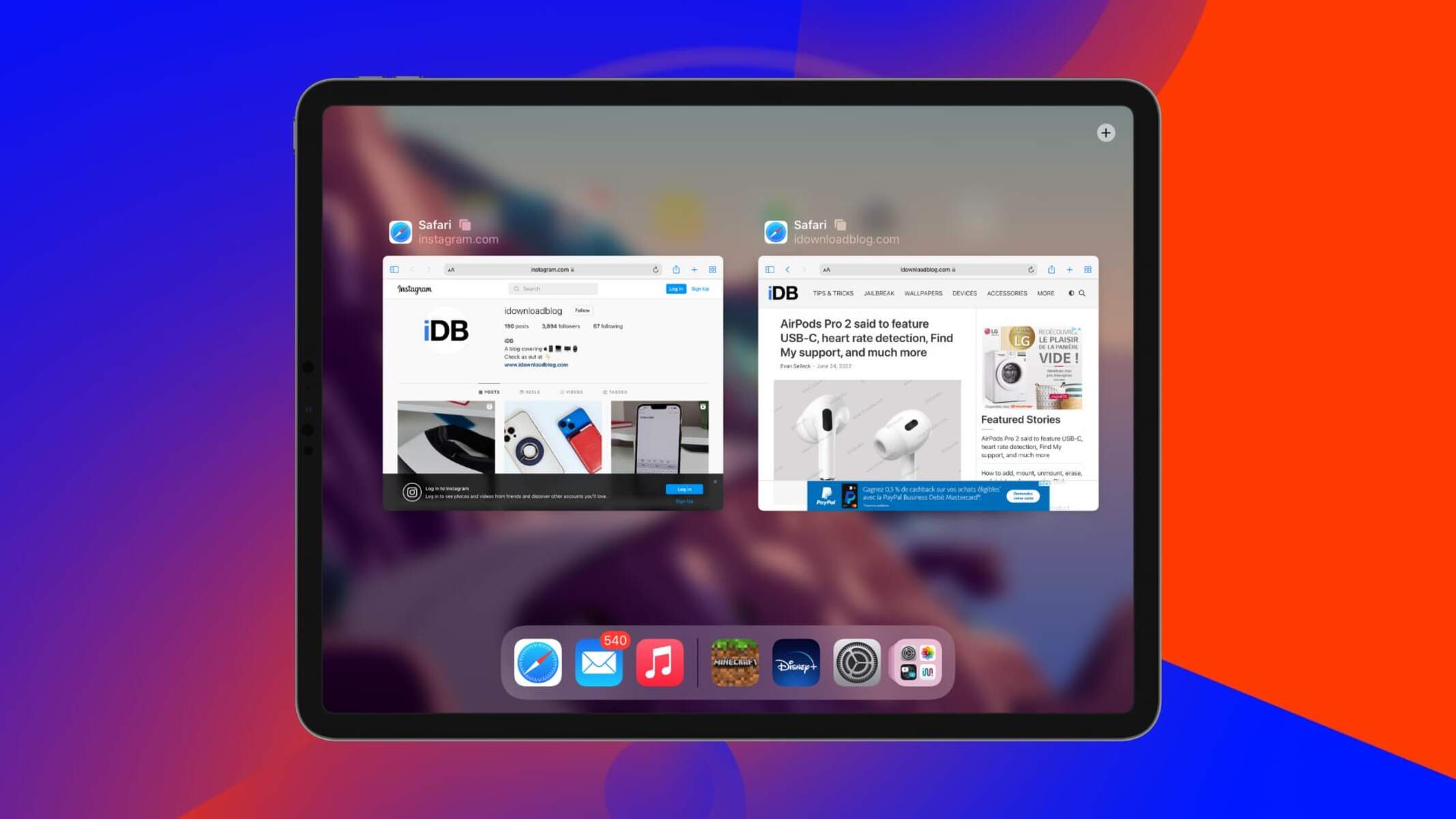
Why Do My Tabs In Safari Disappear
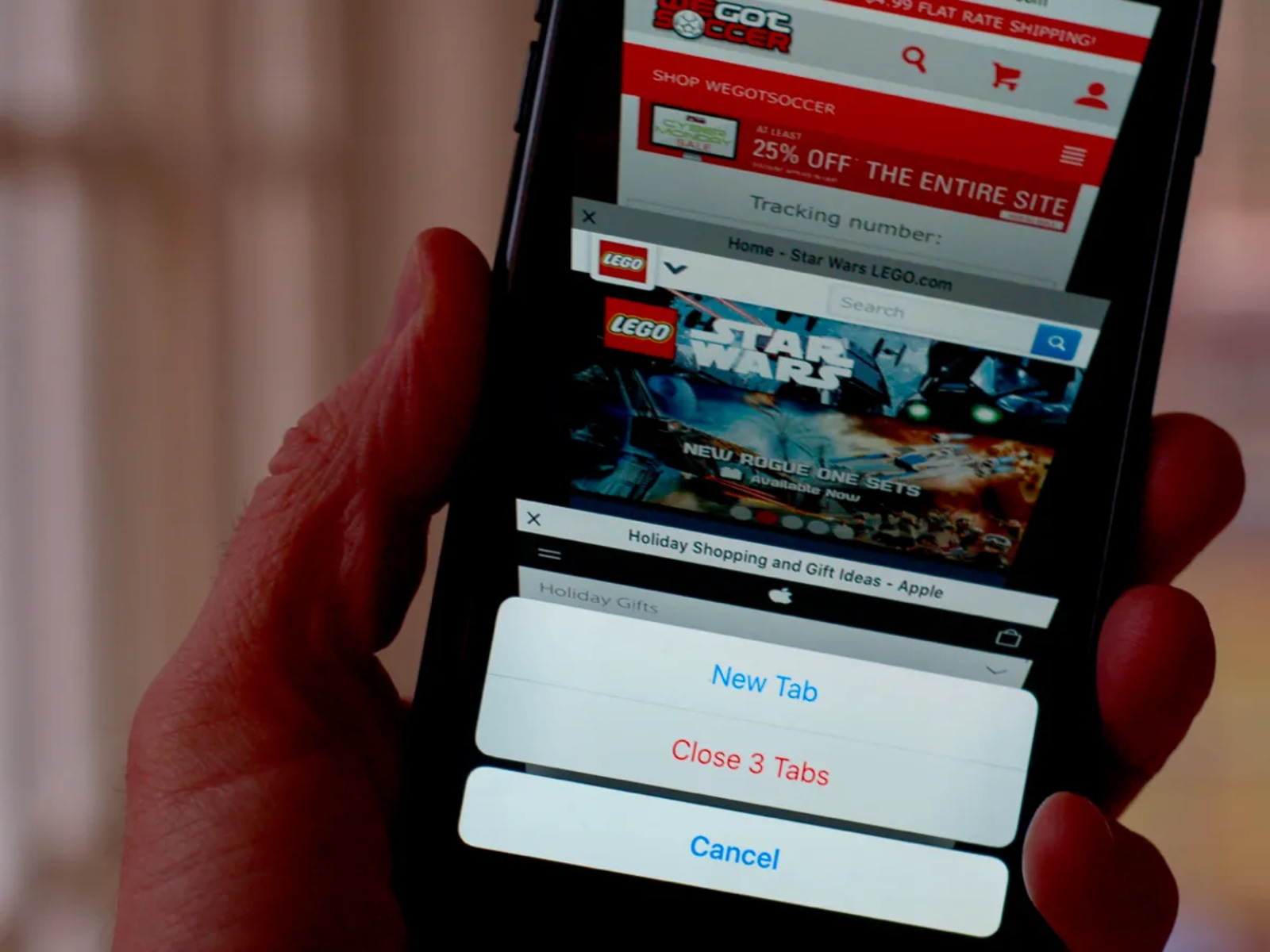
Why Does Safari Keep Opening Closed Tabs
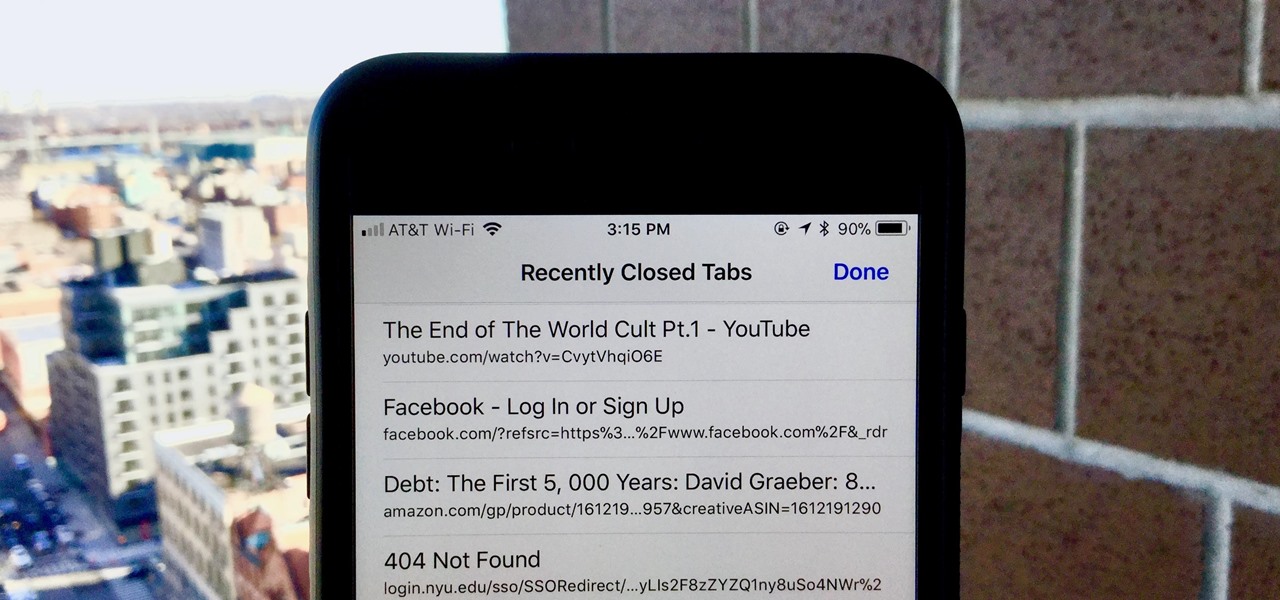
How To Reopen Closed Tab On Safari IPhone
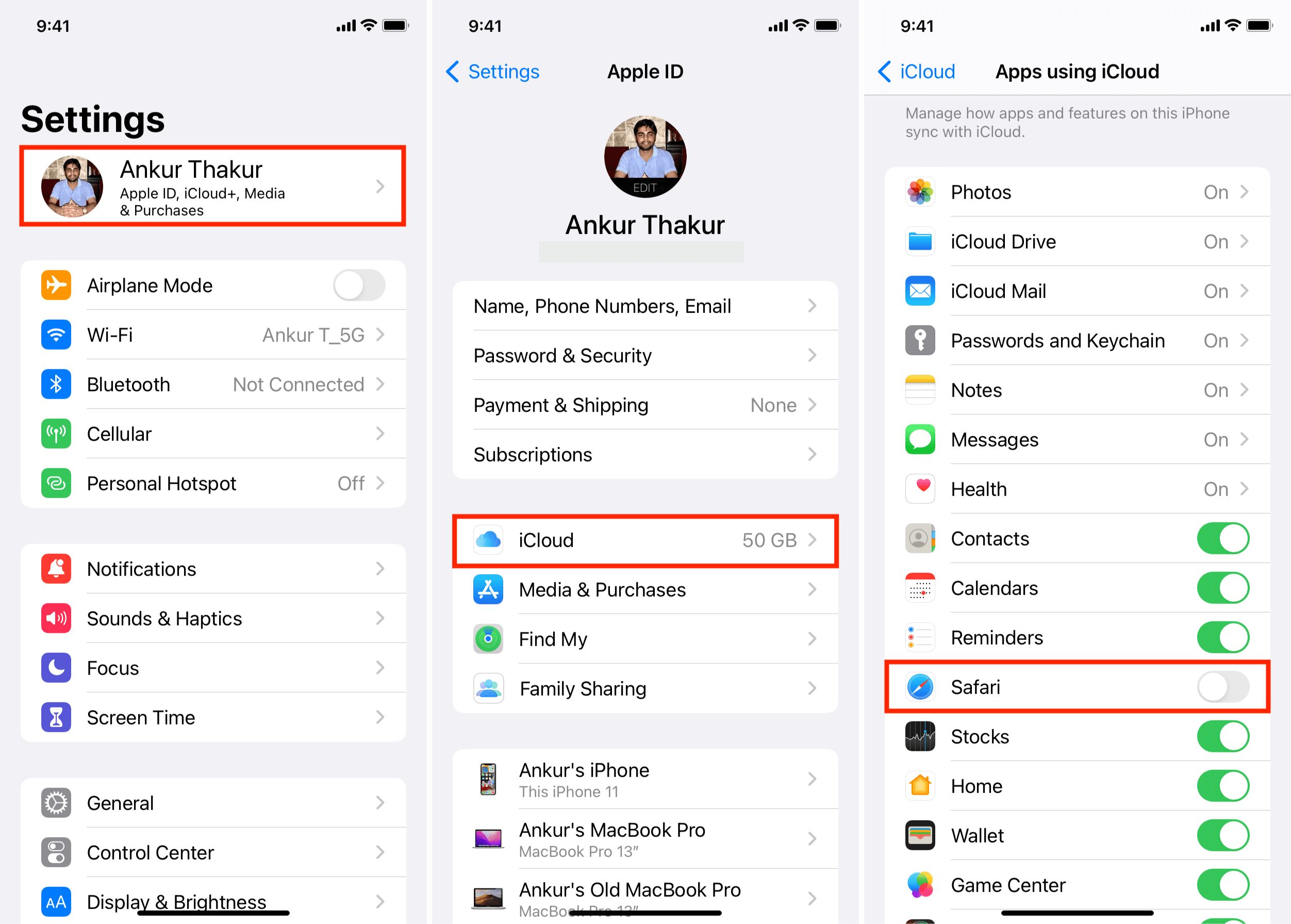
How To Unlink Safari From Mac And IPhone
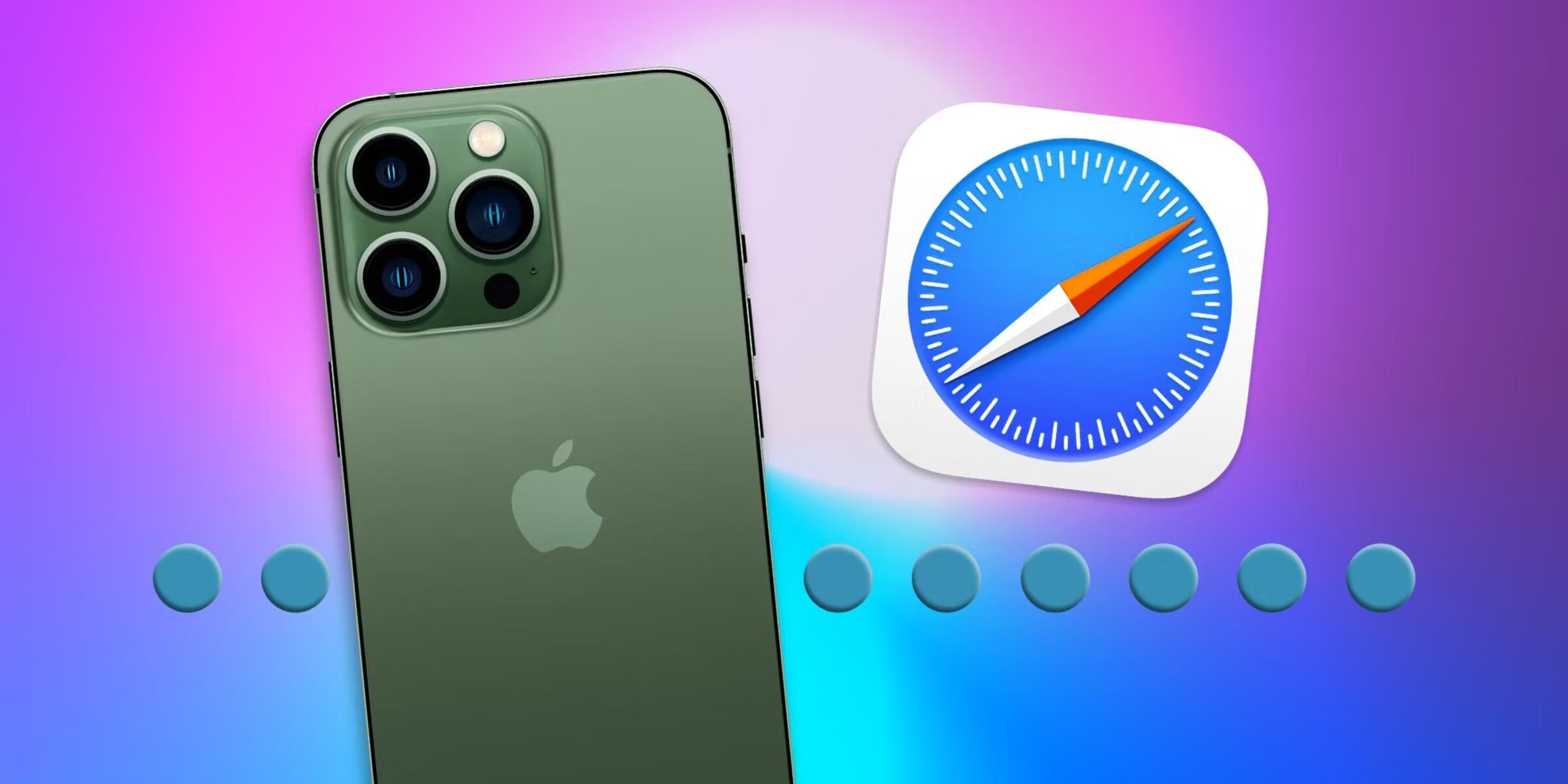
How To Save Passwords In Safari
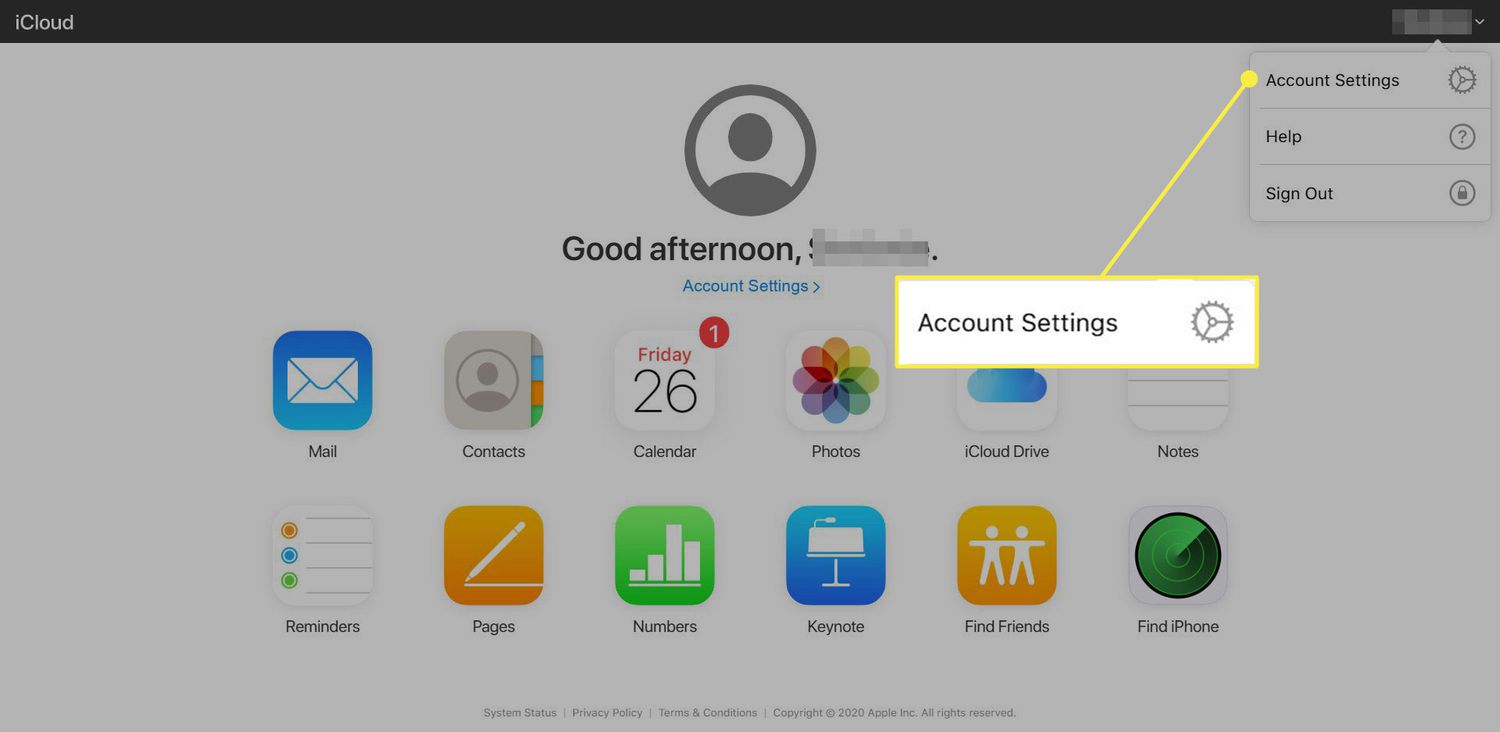
Why Did My Bookmarks Disappear In Safari
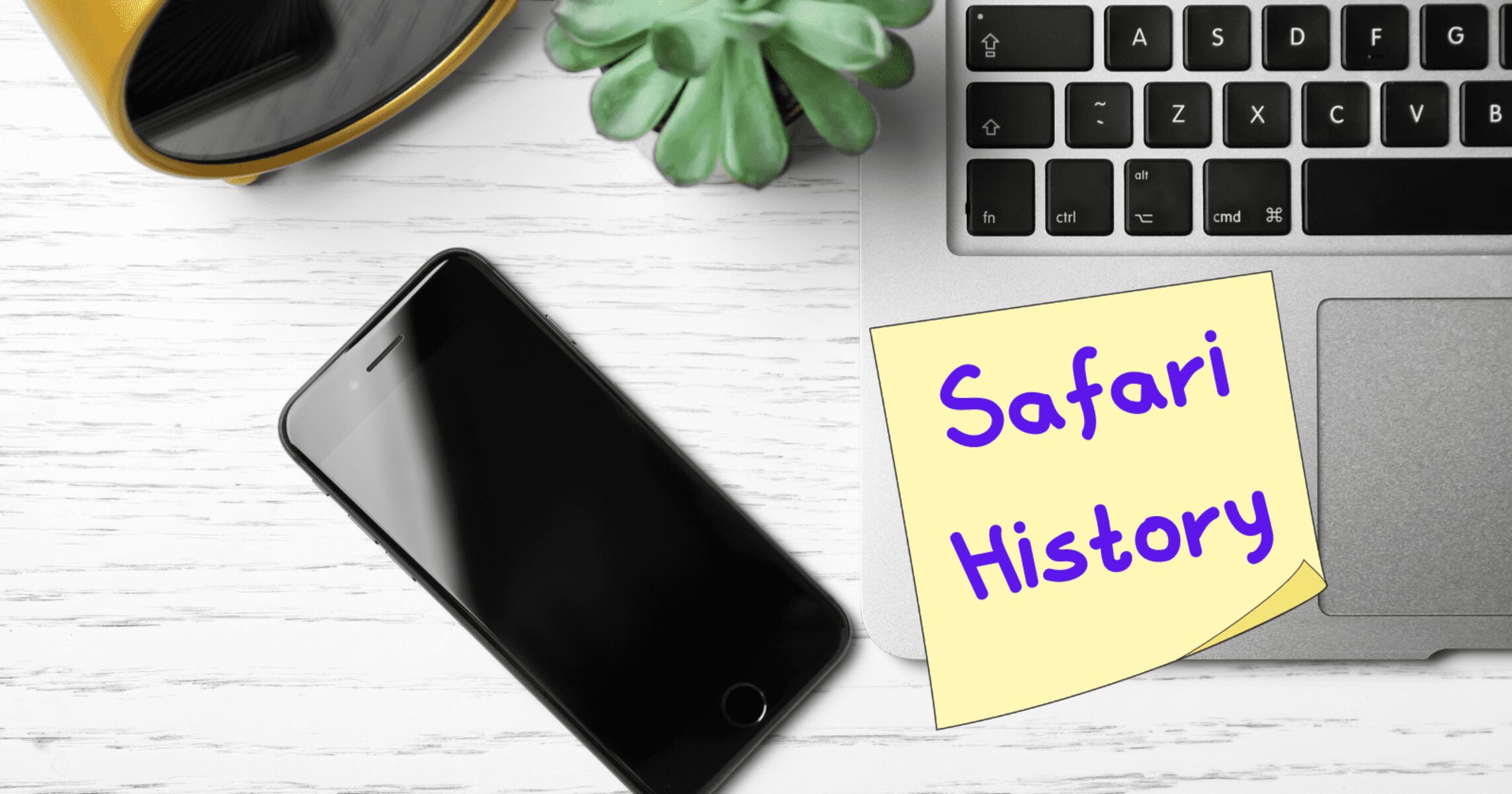
How To Look Up Safari History
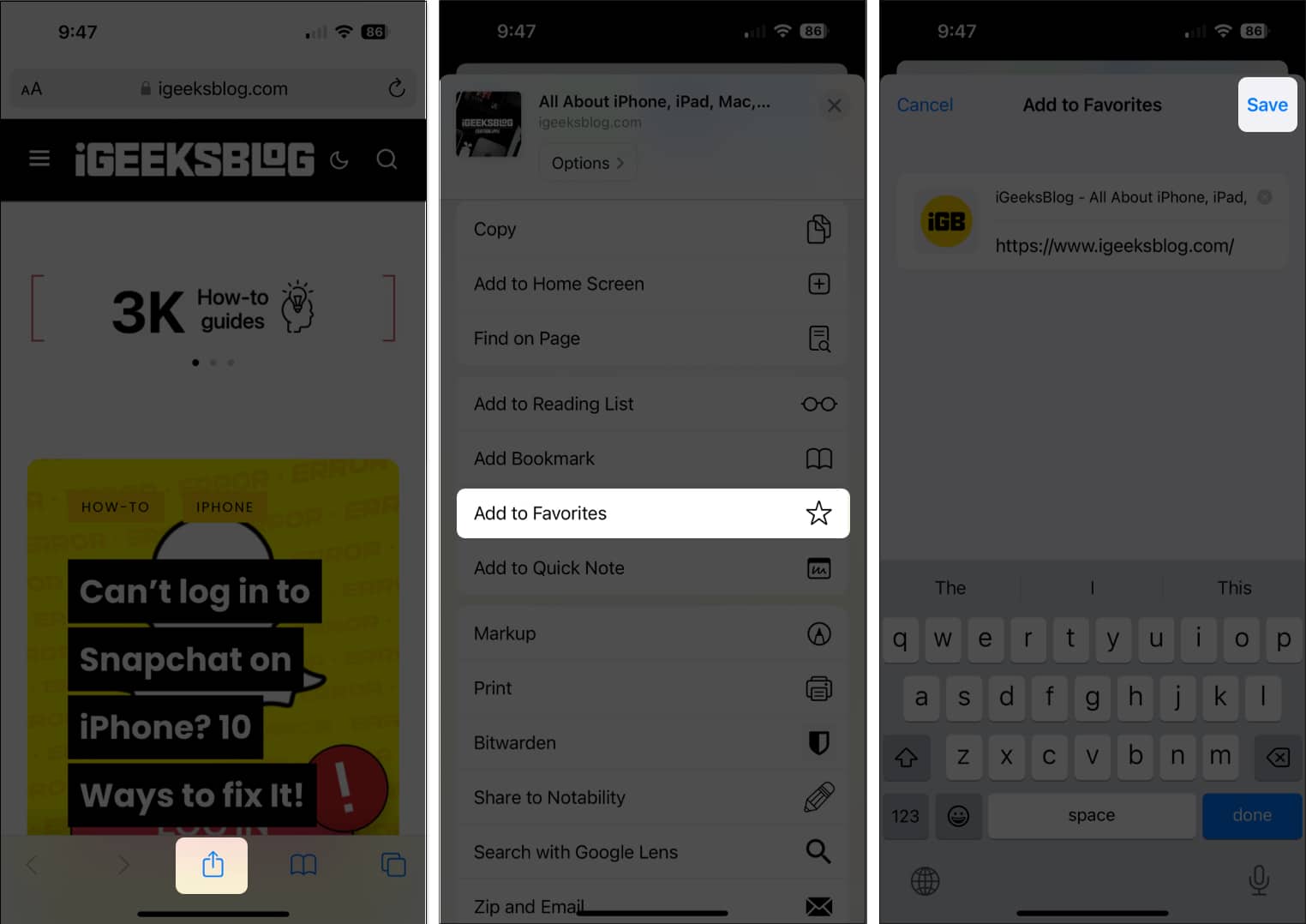
How To Delete Favorites On IPad Safari
Recent stories.

Fintechs and Traditional Banks: Navigating the Future of Financial Services

AI Writing: How It’s Changing the Way We Create Content

How to Find the Best Midjourney Alternative in 2024: A Guide to AI Anime Generators

How to Know When it’s the Right Time to Buy Bitcoin


Unleashing Young Geniuses: How Lingokids Makes Learning a Blast!

- Privacy Overview
- Strictly Necessary Cookies
This website uses cookies so that we can provide you with the best user experience possible. Cookie information is stored in your browser and performs functions such as recognising you when you return to our website and helping our team to understand which sections of the website you find most interesting and useful.
Strictly Necessary Cookie should be enabled at all times so that we can save your preferences for cookie settings.
If you disable this cookie, we will not be able to save your preferences. This means that every time you visit this website you will need to enable or disable cookies again.
How to use tabs and private browsing in Safari for iPhone and iPad
Become a tab master.

- How to open a new tab in Safari
- How to switch tabs in Safari
- How to close a tab in Safari
- How to view recently-closed tabs in Safari
- How to view websites from your other devices in Safari
How to use Tab Groups in Safari
- How to use private browsing in Safari
Tabs in Safari let you keep multiple web pages open so you can switch between them efficiently or refer back to them whenever you want. You can open links in new tabs, so you don't lose where you're currently surfing, and even go into Private Mode to give you some privacy on the internet.
Safari has been around for a couple of decades now, and there's a lot to learn — especially for power users. As a first-party app, there are some excellent iOS features Apple's browser can offer, and it integrates seamlessly with your other Apple devices, making it the best web-browser to navigate seamlessly between iPhone, iPad, and Mac.
How to open a new tab in Safari on iPhone and iPad
Note: We have our Safari Tab Bar at the bottom of our iPhone screen, but all the steps in this guide work if you have yours at the top except from gesture-based manoeuvring. For more on moving the Safari address bar, check out our guide: How to change the Safari address bar on iPhone .
- Open Safari
- On an iPhone, tap the show pages icon in the bottom right of the screen (it looks like two squares). A quick swipe up from the Bottom Tab Bar on iOS 15 and newer gets you there even quicker.
- Tap the + button.
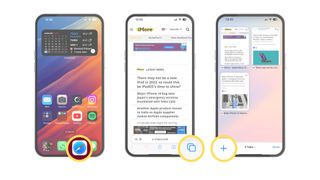
Alternatively, tap and hold the show pages icon, then tap New Tab . For those who like gestures, a quick swipe to the left on the Bottom Tab Bar opens a new tab while a swipe to the right goes back to your previous one.
You can also open links you come across in a new tab by doing the following:
- Tap and hold (long press) the link you want to open in a new tab.
- Tap Open in New Tab (or Open in Background on iPad).
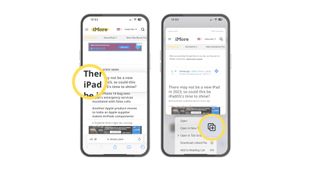
If you're on an iPad, you can open a link in a new window with Split Screen in Safari . Instead of tapping Open in Background, hit Open in Split Screen to have both tabs side by side -- great for when you're working on an essay for example.
How to switch tabs in Safari on iPhone and iPad
- On an iPhone, tap the show pages icon in the bottom right of the screen (it looks like two squares). On iPad, this looks like four squares and appears in the top right of the screen.
- Tap the tab you want to view.
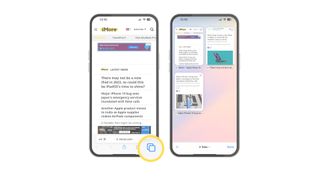
You'll also benefit from Mac-like tab dividers beneath the URL field on the iPad's larger display. You can tap these to switch between tabs too.
Master your iPhone in minutes
iMore offers spot-on advice and guidance from our team of experts, with decades of Apple device experience to lean on. Learn more with iMore!
How to close a tab in Safari on iPhone and iPad
- Tap the X in the top right of a tab to close it. (You can also swipe the card to the left to throw it away).
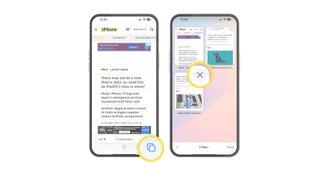
While the above steps work on an iPad, it is easier to tap the X next to your tab in the toolbar to close it and save yourself an extra tap.
How to quickly close all tabs in Safari on iPhone and iPad
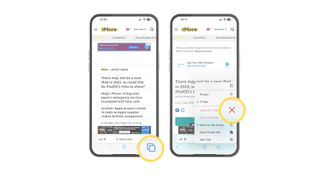
- On an iPhone, tap and hold the show pages icon in the bottom right of the screen (it looks like two squares). On iPad, this looks like four squares and appears in the top right of the screen.
- Tap Close All X Tabs .
How to view recently-closed tabs in Safari for iPhone and iPad
- On an iPhone, tap the show pages icon in the bottom right of the screen (it looks like two squares). On iPad, you can skip this step.
- Tap and hold the + button to bring up the Recently Closed Tabs menu.
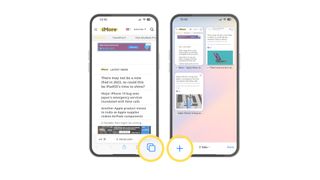
How to view tabs open on your other devices in Safari on iPhone and iPad
Safari's iCloud Tabs feature lets you quickly and easily access web pages you've already opened in Safari on any of your other Apple devices — iPhones, iPads, or Macs. It's a very useful tool for getting the most out of your Apple ecosystem.
- On iPhone or iPad, tap the URL field in the Bottom Tab Bar .
- Scroll down to the bottom of the page to see tabs open on your other devices.
- Click on the tab you want to access from your other device.
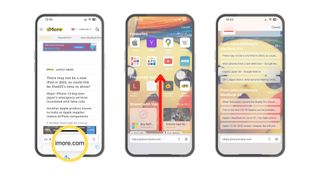
Each device linked to your iCloud account is sorted alphabetically -- if you don't see your iPhone, iPad, or Mac make sure you sign in with the same Apple ID credentials across all devices. Note: tabs created in Private Browsing mode do not appear in iCloud Tabs, so you won't see those.
In iOS 16 , Apple improved upon Tab-Groups in Safari. Tab-Groups are a great way to combine several tabs together and organize them to make them easy to find. The feature also saves you from leaving a ton of tabs open for later reference.
We have a dedicated guide on how to use Tab Groups in Safari , so check that out to get the most out of the organizing tool.
How to use private browsing in Safari on iPhone and iPad
Private browsing works just like regular browsing, except Safari won't cache your search terms or add the pages to your browser history -- this can be useful around the holiday period when gift shopping. Here's how to open private browsing on iPhone or iPad.
- Tap Private or New Private Tab .
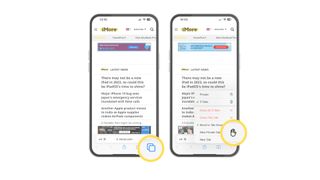
To exit private browsing mode, press and hold the show pages icon and tap (number) Tabs to return to your previously open regular tabs.
You can also start and stop a private browsing section from the sidebar menu on the iPad.
Become a tab master
Using Safari on iPhone and iPad is similar to using Safari on Mac , however, the interface has some differences to account for smaller screens and touchscreen input. With the above guidance, you'll be well on your way to browsing Safari like a pro on your iOS devices making sure you're getting the best iPhone and best iPad experience possible.

John-Anthony Disotto is the How To Editor of iMore, ensuring you can get the most from your Apple products and helping fix things when your technology isn’t behaving itself. Living in Scotland, where he worked for Apple as a technician focused on iOS and iPhone repairs at the Genius Bar, John-Anthony has used the Apple ecosystem for over a decade and prides himself in his ability to complete his Apple Watch activity rings. John-Anthony has previously worked in editorial for collectable TCG websites and graduated from The University of Strathclyde where he won the Scottish Student Journalism Award for Website of the Year as Editor-in-Chief of his university paper. He is also an avid film geek, having previously written film reviews and received the Edinburgh International Film Festival Student Critics award in 2019. John-Anthony also loves to tinker with other non-Apple technology and enjoys playing around with game emulation and Linux on his Steam Deck.
In his spare time, John-Anthony can be found watching any sport under the sun from football to darts, taking the term “Lego house” far too literally as he runs out of space to display any more plastic bricks, or chilling on the couch with his French Bulldog, Kermit.
On-device iOS 18 AI features tipped as Apple makes new open source LLM tools available online
This clever app gives me Spotify Wrapped stats all year round — here's how to use it to see your music listening trends
New Apple Pencil report makes it sound like the PS5 controller - no, really
Most Popular
- 2 iPad Pro M3 (2024): Everything you need to know
- 3 Apple could be springing a big surprise with M4 chip debut on iPad Pro
- 4 Apple has realized what the iPad's best feature is after 14 years
- 5 Mimestream, my favorite Mac email app, is getting an iOS version

Providing simple, straightforward answers to you iPhone and iPad questions.
How to Sync Safari Tabs Across Multiple iOS Devices
When viewing a website with Safari, the website opens in a window called a tab. Through iCloud, these tabs are available to any device running Safari. You just need to enable the sharing of Safari data in the iCloud Settings.
Enable Safari Tab Sharing
To enable Safari data sharing on an iPhone or iPad, open the Settings app and select iCloud.
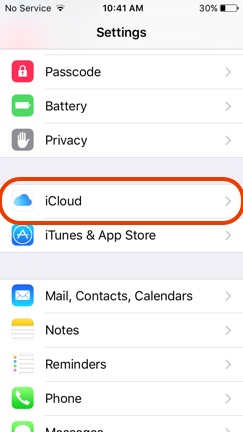
If iCloud is active, you will see your Apple ID listed in the Account field at the top of the window. If iCloud is not active, you will need to sign in using your Apple ID to sync data with iCloud.
Once iCloud is active, toggle the Safari switch to the ON position to activate Safari data sharing. This will allow tabs to be shared across your devices.

Access Safari Tabs on the iPhone
All the open Safari tabs on your iPhone will appear as stacked windows. Tapping on a tab will open it. If you scroll down through all the tabs, there will be a list of open tabs from your other devices. Tapping a tab from the list will open that tab on your device.

Access Safari Tabs on the iPad
Viewing Safari tabs on the iPad is very similar to the iPhone. The open Safari tabs on your iPad will appear as windows. If you scroll down through all the tabs, there will be a list of open tabs from your other devices. Tapping a window or a tab from the list will open that tab on your iPad.
- Apple for Business
- Blackmagic Design
- Epson Printers
- Canon Printers
- LG Displays

Use This Hidden Feature in Safari to Access Tabs on Your Other Apple Devices

- productivity
Related items
- Did You Know Text Entry Boxes in Web Browsers Are Easy to Expand?
- Apple Announces New MacBook Air Lineup with M3 Chip
- Take Advantage of the Reference Library in Your Mac
- Six Reasons Why You Should Restart Your Mac Periodically
- How to Sync Your Text Messages across All Your Apple Devices
Our Company
- Experience & Certifications
- Hours & Locations
- Philanthropy
- Job Opportunities
MBS Resources
- MBS Downloads
- Service FAQ
- Return Policy
- Terms and Conditions
- Privacy Statement
- Newsletters
- Subscribe to our Newsletter
Main Office
611 S. Frederick Ave. (Rt. 355) Gaithersburg, MD 20877
Phone: (301) 590-2555 Toll-Free: (888) 354-0100 Online Sales: (301) 518-9545 Fax: (301) 590-8142
- Apple Watch
- Accessories
- Digital Magazine – Subscribe
- Digital Magazine – Info
- Smart Answers
- New iPad Air
- iPad mini 7
- Next Mac Pro
- Best Mac antivirus
- Best Mac VPN
When you purchase through links in our articles, we may earn a small commission. This doesn't affect our editorial independence .
How to sync Pinned Tabs and Safari settings between Macs

Whether you are moving to a new Mac or just introducing another Mac to your computer set up you will no doubt be celebrating the way that many of the features of your old Mac sync simply to the new devices thanks to iCloud. For example, if you use iCloud Drive then your entire Desktop and Documents folders from your old Mac will sync to your new Mac, and if you use iCloud Photo Library all your photos will be available on your new Mac too.
But there is one app where our settings just don’t transfer across so simply: Safari. As an extensive user of Pinned Tabs in Safari (which means that the pages I use the most are pinned to the top of my Safari window at all times) it is really frustrating that this set up isn’t mirrored on every Apple device I have.
The strange thing is that as useful as the Pinned Tabs feature is, and despite the years that have passed since Apple introduced it with El Capitan in 2015, Apple hasn’t yet made Pinned Tabs sync across our Apple devices.
If you are setting up a new Mac (and you aren’t syncing with a Time Machine back up ) and want to know how you can get your Pinned Tabs to sync across we have some good news and some bad news.
The good news is that with the release of Monterey and the new version of Safari coming this autumn Apple will implement a way to simplify the transfer of pinned web pages from Safari on one device to Safari on another. The bad news is that for this to work seamlessly you will have to wait until Monterey and the new Safari launch.
But there is a bit more good news: you can test the new features coming in Monterey now thanks to the public beta, and you can also try out the new Safari via the Safari Technology Preview. Just note that the implementation of these new features will only be in beta and probably won’t even work right now. Read: How to install the Monterey Beta .
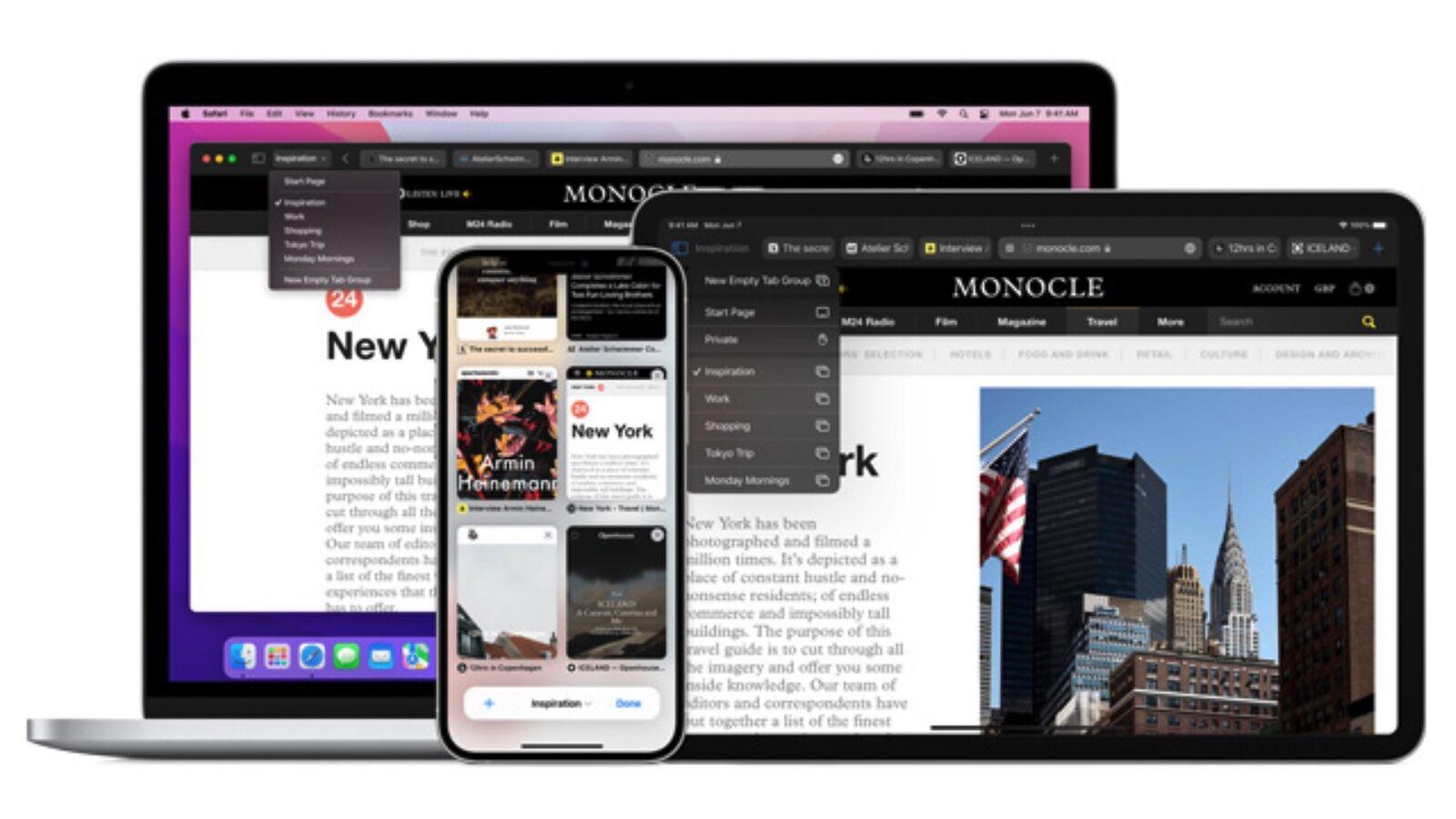
How to sync Safari Tabs
One of the big changes coming to the new Safari is the ability to sync Safari tabs across devices, so you can use them on your iPhone, iPad, or other Macs. You’ll also be able to group tabs together, so that you can easily access tabs that are related to a particular activity you want to undertake. We’ll address Tab Groups elsewhere, what we are interested in here is the fact that tabs will be synced between all your devices.
Apple is still developing Monterey and the new version of Safari, which will introduced this new ability to sync tabs. As we said above, you could try out the Safari Technology Preview, which will work in Big Sur, and test some of the features coming to Safari later this year. Equally you can try out the beta version of Monterey. However running beta software probably isn’t going to be the solution you need right now if you just want to transfer your Pinned Tabs from one Mac to another.
If you don’t want to run the betas, and you don’t want to wait until the autumn, there is still a way to transfer your Pinned Tabs from your old and new Mac. Follow the steps outlined below, which work in current and older versions of the Mac operating systems.
How to sync web pages between Macs (and other Apple devices)
The easiest way to grab your tabs is to follow these steps:
- Open the webpage you want to access on your old device.

- Click or tap on that icon and it will open that same webpage in Safari on your new device.
- Now you can right click on the tab for that webpage to Pin it.
This is a handy feature of Continuity, which was introduced in Yosemite and iOS 8 back in 2014 and means that your iPhone, Mac and iPad are all connected, so you can pick up on your Mac from where you left off on your iPhone, for example.
This is a great solution if you have a few web pages that you use a lot – you can open each one on the old Mac, wait for the Safari icon that shows a webpage is open on another device, and click on it to open that page in Safari.
There are alternative methods that will suit you if there are more pages you wish to sync across to your new Mac though, or if you won’t have the old Mac accessible when you wish to sync your Safari settings.
How to move Safari settings to a new Mac
Another option is to transfer your Safari Preferences – which includes all your Favorites, Bookmarks and Reading List items – from the old Mac to the Mac.
Before you begin you need to make sure that the Pinned Tabs are actually saved to your Bookmark list (which is actually your Favorites list), because they won’t automatically copy across otherwise.
Open the webpage and then click on Bookmarks > Add Bookmarks. You can also choose to add Bookmarks for all the pages you have open.
Now that you have your Pinned tabs saved as Bookmarks you need to locate the Bookmarks.plist in your old Mac and copy it to your new Mac.
How to find Bookmarks.plist
- Open the Finder.
- Click on the Home folder and locate the Library folder (jump to here if you can’t see Home or here if you can’t locate the Library folder).
- Click on the Safari folder in the Library folder.
- Find Bookmarks.plist
- Copy that file to one of your iCloud folders – we copied to the Desktop since it’s synced via iCloud.
- On the new Mac locate the file you just copied over.
- Close Safari on the new Mac if it is open.
- Open the Home > Library and locate the Safari folder on the new Mac.
- Copy the Bookmarks.plist file to the Safari folder. (You can replace the existing file).
- Now when you launch Safari your bookmarks and favourites should be there.
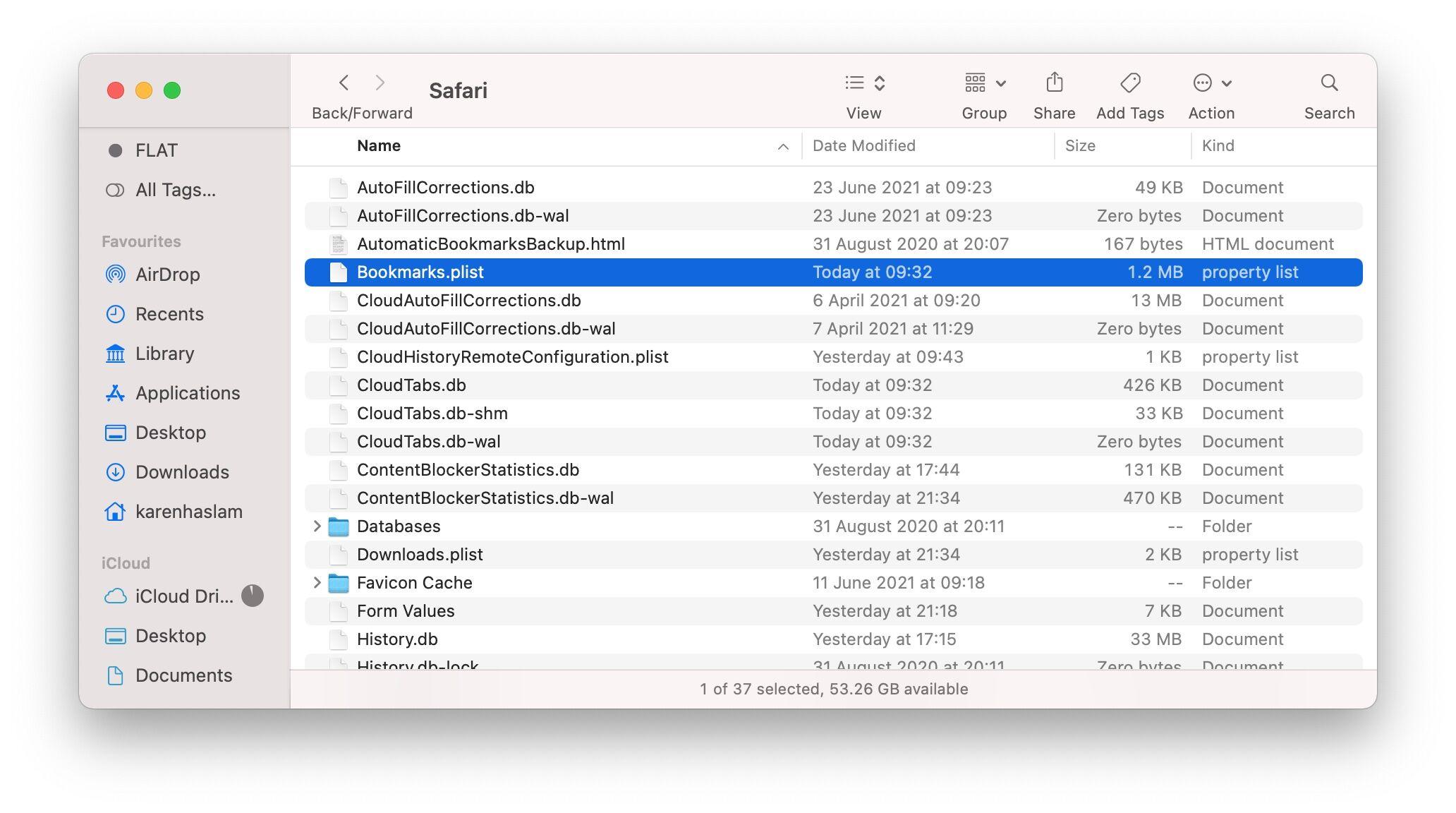
Not seeing the Home folder?
- Go to Finder > Preferences.
- Click on Sidebar.
- You will see an option to Show these items in the sidebar. You want to select the that looks like a house icon and has the name of your Mac beside it. This is your Home folder.
- Now click on the Home folder in Favourites on the sidebar of the Finder.
- You can now access Home in the Finder.
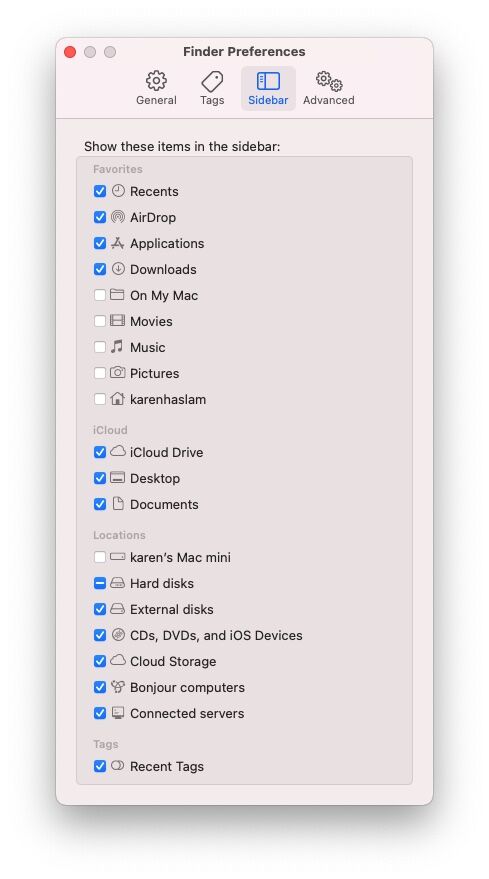
Not seeing the Library folder?
- Open Finder.
- From the menu at the top of the screen click on Go.
- Click on Go to folder.
- Type Library.
- Scroll to Safari and open the folder.
- Copy the plist folder to the new location as described above.
Read: How to find the hidden Library folder.
How to recover Pinned Tabs from Favorites and Bookmarks
Copying the Bookmarks.plist file to your new Mac will transfer your Bookmarks, including any webpages you have added to Favourites and Reading List, to you new Mac. When you open Safari you should see shortcuts to these pages as well as any webpages that are open on your other devices in the center of the Safari window.
If you can’t see your Favourites Bar or the Tabs Bar to the top of the window go to View and choose:
- View > Show Favourites Bar
- View > Show Tabs Bar
- View > Show Sidebar
Now you can click on the Favorites and locate anything you had saved to your Reading List on your other device.
Once those pages are open right click or control click and choose Pin Tab.
This is an incredibly long winded way to do something that Apple really should have simplified long ago. Thankfully that will be addressed in the next version of macOS.
Read: How to use Safari on a Mac .
Author: Karen Haslam , Managing Editor

Karen has worked on both sides of the Apple divide, clocking up a number of years at Apple's PR agency prior to joining Macworld more than two decades ago. Karen's career highlights include interviewing Apple's Steve Wozniak and discussing Steve Jobs’ legacy on the BBC. Having edited the U.K. print and online editions of Macworld for many years, more recently her focus has been on SEO and evergreen content as well product recommendations and buying advice on Macworld.com.
Recent stories by Karen Haslam:
- How to copy and paste on a MacBook or Mac
- How to scan documents on iPhone
- How to back up a MacBook or Mac
How to Send Safari Pages From One Device to Another
If you're using Safari on both your Mac and your iPad or iPhone , you can access open tabs across all your devices. This comes in handy when you want to continue your browsing session from your tablet to your laptop or vice versa.

Make Sure You're Logged into iCloud on Both Devices
To pick up where you left off in Safari on another Apple device, you'll need to be logged into the same iCloud account on both devices. Here's how to check, if you're not sure.
1. On the Mac, click iCloud in System Preferences.
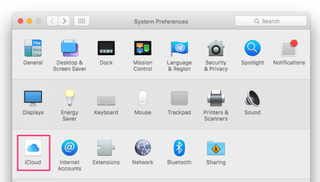
2. Make sure Safari is checked in the iCloud window.
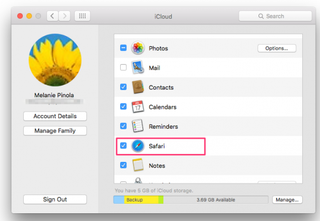
3. In iOS , open the Settings app.
4. Tap iCloud and make sure Safari is toggled on.
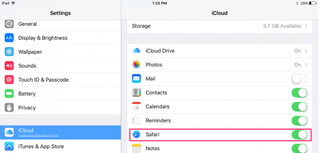
See Web Pages Open on Your Other Devices
Now you can see and open the web pages that are currently open on your other Mac or iOS devices. Although this feature has been around for awhile (since iOS 6 and OS X Mountain Lion), it's handy to know if you're new to Safari on either iOS or the Mac.
Stay in the know with Laptop Mag
Get our in-depth reviews, helpful tips, great deals, and the biggest news stories delivered to your inbox.
1. Tap the tabs icon in Safari. It looks like two overlapping squares.
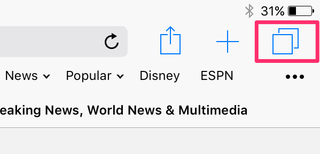
2. Tap a webpage listed under your device's name.

This will open that web page in a new tab in Safari. The tab will still be open on the other device. On the Mac, you can also also hover your mouse pointer over a web page and click the X button to close the site on your other device.

"Hand Off" Web Pages in Safari Between Devices
Apple's Handoff feature, introduced with OS X Yosemite (OS X 10.10) works similarly to iCloud Tabs, but it instead sends only your current open tab in Safari to the other device using Bluetooth. It's more limited than iCloud Tabs, but quicker if you don't need to select which tab to open on your other device.
1. Again, make sure you're signed into the same iCloud account on both devices.
2. Make sure Bluetooth is enabled on both your devices. On the Mac, that setting is under System Preferences > Bluetooth. In iOS, it's under the Settings app > Bluetooth.
3a. To hand off on a Mac:
- Click the tabs icon in Safari.
- Click on the new Handoff icon that appears in left side of the Dock.

3b. To hand off on an iPad or iPhone:
- Double-click the Home button to get to the multitasking screen.
- Click on the Handoff Safari button at the bottom of the screen.
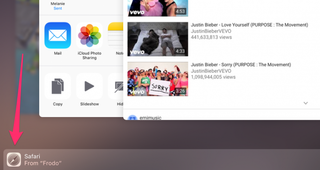
You can also swipe up from the Lock screen in iOS to see the Handoff icon
Safari Browser Tips
- Previous Tip
- Manage Your Passwords in Safari
- How to Merge All Windows in Safari
- How to Block or Enable Plug-ins for Specific Sites in Safari
- Make Safari Read a Web Page Aloud to You
- Force Safari to Sync with iCloud
- How to Sync Safari Bookmarks with Chrome, Firefox and Internet Explorer
- Hide Top Sites in Safari
- See the Entire URL in Safari's Address Bar
- Quickly Close Open Tabs in Safari
- How to Delete Cookies and Stored Website Data in Safari
- How to Block Cookies in Safari
- How to Restore Recently Closed Tabs and Windows in Safari
- Search for Text Within a Web Page in Safari
- Pin a Tab in Safari
- How to Turn Off Website Notifications in Safari
- How to Mute Tabs in Safari
- How to Subscribe to RSS Feeds in Safari
Google is finally deleting your Incognito mode browsing history — well, some of it
Traditional search engines are broken — can AI help?
Windows 12 isn't Microsoft's only missing operating system
Most Popular
- 2 5 AI tools for students: Use AI to help you study, summarize content, and edit papers
- 3 How to get M3 MacBook Air, Pro for all-time low prices at Best Buy this weekend
- 4 The Zephyrus G14 gaming laptop is flawed, but I still love it — and you might, too.
- 5 How to switch devices on Google Meet: Seamlessly transfer from phone to laptop
Microsoft Edge for iOS can now sync history and open tabs to other devices
Using Edge across iOS and different operating systems just became a bit smoother.
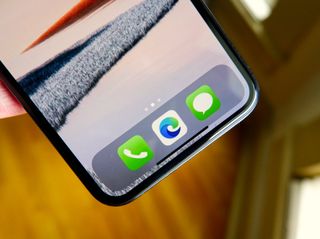
What you need to know
- Microsoft Edge on iOS can now sync open tabs and history to other devices.
- You can now also set Edge as your default browser on iOS.
- The update also includes bug fixes and general improvements.
Microsoft Edge on iOS recently received an update that allows it to sync open tabs and history with other devices. This feature has been in testing for some time and is now generally available. The update also adds the option to set Edge as your default browser on iOS 14 .
The option to sync open tabs and history across devices should make a more seamless experience that extends across different form factors.
Here's everything that's new for Edge on iOS, as listed in its changelog:
- You can now sync your history and open tabs across your signed-in devices
- You can set Microsoft Edge as your default browser on iOS14
- We've also made some general bug fixes and performance improvements.
Microsoft has been hard at work improving the mobile experience for people who use its Edge browser. The Android version of Edge Canary recently made a major jump to be in line with the desktop version of Edge. We've only had a short time to test out those improvements but have been impressed with the speed of Edge Canary on Android so far.
Now, iOS users have something new to use as well. The update lists the same changelog for iPhones and iPads, so you can take advantage of the new features on either type of device.

Sync across devices.
The Microsoft Edge browser is available on all major platforms, including Windows, Android, and iOS. Now, you can sync your open tabs and history from Edge on iOS across to other versions of the browser.
Get the Windows Central Newsletter
All the latest news, reviews, and guides for Windows and Xbox diehards.

Sean Endicott brings nearly a decade of experience covering Microsoft and Windows news to Windows Central. He joined our team in 2017 as an app reviewer and now heads up our day-to-day news coverage. If you have a news tip or an app to review, hit him up at [email protected] .
- 2 This ultraportable AI laptop wants to travel with you, and it's got insane battery life to do it
- 3 What's Windows 11 LTSC, and can you install it on your computer?
- 4 Why do the Ghouls in Fallout have no noses? I ventured into the digital wasteland to try and find out
- 5 How to increase ROG Ally VRAM to improve gaming handheld GPU performance
How-To Geek
How to sync microsoft edge tabs across devices.
Microsoft Edge can finally sync tabs across devices. Here's how to use it!
Quick Links
Enable tab sync in microsoft edge, use tab sync in microsoft edge.
If you're like most, you surf the internet across multiple devices, including a smartphone and a computer. The key to making those work together is allowing tabs to sync between devices. Thankfully, Microsoft Edge syncs tabs and history, but only after you set it up.
If you're unfamiliar with tab syncing, the concept is pretty simple. Let's say that you use Microsoft Edge on your PC and your smartphone. With tab sync enabled, you can view the tabs open on your phone from the PC.
Related: What You Need to Know About the New Microsoft Edge Browser
Microsoft doesn't enable the tab syncing feature by default, so we'll have to turn it on. We'll start on the desktop version of Edge, which is available for Windows , Mac , and Linux .
First, open the Edge web browser, click the three-dot menu icon in the top-right corner, then select "Settings."
Under "Your Profile" on the Settings page, click "Sync."
Toggle the switch on for "Open Tabs." Additionally, you can enable "History," which will further improve the interoperability between devices.
That's all we have to do on the desktop.
Now, open Microsoft Edge on your iPhone , iPad , or Android device. Tap the three-dot menu icon at the bottom of the screen.
Select "Settings" from the menu.
Scroll down to the "Accounts" section of the Settings and tap your account.
Select "Sync" under the "Sync Settings" heading.
Toggle on "Sync" at the top, then make sure that "Open Tabs" is enabled under "Data Items." Here's where you can also enable "History" again.
Microsoft Edge will now sync open tabs between any of the devices that have these settings enabled. Make sure to enable it on every device you own.
With tab syncing enabled, we can now access open tabs from any Microsoft Edge browser. It works slightly differently on desktop and mobile, so we'll show you both.
On the desktop version of Edge, click the three-dot menu icon in the top-right corner, then select "History" from the menu.
The history menu will open. There will now be a tab titled "Tabs From Other Devices." Your devices will be listed here. Expand each device's listing to see the list of open tabs.
You may not see all the tabs right away. It will take a little while for everything to sync after you first enable the feature.
To access tabs from other devices on iPhone, iPad, or Android, tap the tabs button in the bottom bar.
Navigate to the "Recent Tabs From Other Devices" tab. The other devices will be listed here, and you can expand them to see the open tabs.
It's as simple as that! You can easily pick up where you left off on any device. If you switch between devices often, this feature can be a real time saver.
Looks like no one’s replied in a while. To start the conversation again, simply ask a new question.
Help! Can't see open tabs from other devices.
Hi. Ever since I installed Big Sur, I'm unable to see open tabs on my other devices in Safari on my iMac and I cannot see open tabs on my iMac on my other devices. All devices are logged into the same Apple ID and I am not using private windows. Help!
iMac 27″ 5K, macOS 11.0
Posted on Dec 1, 2020 7:46 AM
Similar questions
- iCloud safari is not showing open tabs on other devices ever since I updated to Big Sur, I can not see open tabs in safari on other apple devices. I have an XR phone and a new iPad Air. how to fix?? 253 1
- Safari Tabs open tabs on other devices do not show on mac. all on latest os. ios devices all see each other, but do not see mac. all are signed in to iCloud 174 6
- Safari tabs not syncing from new M2 MacBook Air Setup of my new M2 MacBook Air went smoothly EXCEPT its Safari tabs are not syncing with my other devices. My MBA sees table from all other devices (4) while all the others see all the others EXCEPT the MBA. All with same Apple ID. Have tried the untick Safari option in iCloud method on all devices and reboot, but the M2 MBA just won't show up. All devices are on latest OS version. It's now 5 days old, so they should have synced by now! 412 4
Loading page content
Page content loaded
Dec 7, 2020 8:21 PM in response to metlwright
Hi there metlwright,
We understand you're experiencing an issue with your Safari tabs not showing between your iMac and other devices, and we'd like to see if we can assist.
To start, make sure your other devices are all up to date:
Update your iPhone, iPad, or iPod touch
How to update the software on your Mac
Also, check to make sure that your Apple ID isn't blocked on any of your devices. On iOS, you can check this in Settings > Phone > Blocked. On iPadOS, find this in Settings > Messages > Blocked Contacts. On your Mac, check this in Messages > Preferences > Blocked.
Finally, restart each of your devices, and see if that gets your tabs showing as expected.
Dec 14, 2020 3:22 PM in response to metlwright
I have this issue also, I’ve not upgraded to Big Sur. Latest iOS and iPadOS, all the latest patches pre Big Sur. Stopped working on Big Sur release day. I refuse to update at present.
Your Guide to Private Browsing in Safari
Private browsing is often misunderstood, but it can be a helpful feature if you know what’s what.
Quick Links
What private browsing does in safari, how to use safari private browsing on iphone and ipad, how to use safari private browsing on a mac, how to disable safari private browsing on iphone and ipad, how to disable safari private browsing on a mac, key takeaways.
- Private Browsing in Safari hides browsing history, autofill details, downloads, and locks tabs after inactivity.
- Safari on Mac groups private and non-private tabs, while on iPhone it shows all tabs regardless of mode.
- To use Private Browsing in Safari, identify it by a dark address bar, "Private" indicator, or "Private" next to the site URL.
Most browsers offer a private browsing mode that aims to keep the websites you view off the record. But what exactly does it do in Safari and how do you get the best out of it?
First and foremost, Private Browsing keeps the website pages you visit out of your History . The aim is to prevent someone else from seeing which pages you have visited if they have access to your phone or computer.
In Safari, Private Browsing does a lot more than just hide URLs. It also:
- Prevents recent searches from showing up in your history.
- Stops remembering details you enter in forms for autofill.
- Keeps downloaded items from appearing in your Downloads list.
- Locks private tabs after a period of inactivity.
- Adds tracking and fingerprinting protection.
However, it’s important to note that Private Browsing does not stop you from being tracked altogether. Websites you visit will still be able to use various methods to track you, and will still have access to all data that you send them.
On macOS, iOS, and iPadOS, Safari groups private tabs together, and separates them from non-private tabs. On Mac, each Safari window is either private or non-private, and can have as many tabs as you want.
On iPhone, you can switch between private and non-private modes, each of which shows all tabs belonging to that mode.
You can spot when you’re viewing a private tab with these signs:
- The address bar has a dark background. This may be less noticeable if you’re using Dark Mode .
- On Mac, you’ll see a prominent Private indicator in the title bar.
- On iPhone, you’ll see Private alongside the site URL at the bottom of your screen.
The steps to enter Private Browsing mode are nearly identical on an iPhone and iPad. The only difference is that the tab icon is at the bottom of the screen on iOS and the top on iPadOS.
- Long-press the tab icon (two overlapping pages) on the bottom-right (iPhone) or top-right (iPad) of your screen.
- Tap the New Private Tab menu item.
- If locked, enter your passcode to unlock Private Browsing.
You can enter Private Browsing mode on macOS using either a menu item or a keyboard shortcut:
- Open the File menu and choose New Private Window .
- Alternatively, use the keyboard shortcut Shift + Cmd + n .
- Use the browser as you normally would. Any tabs you open from this window will open in the same window, in private mode.
You may want to prevent users of an iPhone or iPad from using Private Browsing mode at all. To do so:
- Open the Settings app.
- Tap on Screen Time .
- Under RESTRICTIONS , click on Content & Privacy Restrictions .
- If not already enabled, press the toggle next to Content & Privacy Restrictions to enable.
- Tap Content Restrictions .
- Change the Web Content setting to Limit Adult Websites .
The option to enter private mode will now be gone.
On macOS, the wording of certain options differs slightly, but the overall process is near-identical to iOS:
- Open System Settings via the Apple menu.
- Click on Screen Time in the left panel.
- Under the Restrictions section, click on Content & Privacy .
- Click Content Restrictions .
- Change the Access to Web Content setting to Limit Adult Websites .
Private Browsing will now be unavailable in Safari, although any existing private windows will stay open.
Of course, anyone can re-enable Private Browsing using the same process, in reverse. However, you can use Screen Time’s Lock Screen Time Settings option to set a passcode and enforce the setting permanently.

IMAGES
VIDEO
COMMENTS
View tabs that are open on your other Apple devices. Tap , tap , then scroll to see the tabs open on your other devices at the bottom of the start page. To close a tab on another Apple device, touch and hold the link, then choose Close. Note: To view tabs open on your other devices, you must have iCloud Tabs turned on for your start page.
Step 1: Tap the Safari app on your iPhone or iPad's home screen. Step 2: Tap the tab icon on Safari. Step 3: Tap the + sign to open the Safari Start Page. Step 4: Scroll to the bottom of the ...
In Safari on iPad, view the tabs that are open on your other Apple devices and keep tabs and Tab Groups updated across devices.
On a Mac, click the Apple icon in the top-left corner of the screen and select System Settings (or System Preferences in macOS 12 and older). Select your Apple ID name, then click iCloud. Find the ...
As long as all your devices are using the same Apple ID and you've enabled iCloud sync for Safari, you can use the iCloud Tabs feature. iCloud Tabs let you pick up your browsing history where you left off. The feature resides inside the Safari tab switcher. On your iPhone or iPad, open the "Safari" app and tap on the Tabs button from the toolbar.
Here's how to set up iCloud for Safari: On Mac: Open System Preferences and click on Apple ID. Select iCloud from the sidebar. Ensure that the Safari option is checked. This allows Safari to sync your browsing data across your devices. On iPhone and iPad: Open the Settings app and tap on your Apple ID at the top.
Scroll down to the bottom of the page to see tabs open on your other devices. Click on the tab you want to access from your other device. How to view tabs open on your other devices in Safari: Tap on the URL field, scroll to the bottom of the page, and select the correct device from the drop down menu to see tis open tabs.
Tapping on a tab will open it. If you scroll down through all the tabs, there will be a list of open tabs from your other devices. Tapping a tab from the list will open that tab on your device. Access Safari Tabs on the iPad. Viewing Safari tabs on the iPad is very similar to the iPhone. The open Safari tabs on your iPad will appear as windows.
Method 2: Search for a tab by name. Open Safari on your iPhone. Tap on the 'Tabs' icon in the bottom right corner. In the tab-view page, swipe down to access the Search bar at the top. Type in the name of the tab you wish to find and it should automatically show up in your search results.
You can scroll down on that screen to see other categories of saved pages, like your reading list, and at the bottom you'll find tabs from other devices. The name of a device will be the heading, and you can tap on that heading to choose which device you want to see the tabs from.
This tab overview is easiest to find on the iPad, where tapping the tab button displays local tabs as thumbnails at the top of the screen and lists tabs from other devices beneath. On the iPhone, scroll down to the bottom of the tab list to see them, and on the Mac, choose View > Show Tab Overview. Click or tap any tab to view it. To close an ...
Copy that file to one of your iCloud folders - we copied to the Desktop since it's synced via iCloud. On the new Mac locate the file you just copied over. Close Safari on the new Mac if it is ...
2. Make sure Bluetooth is enabled on both your devices. On the Mac, that setting is under System Preferences > Bluetooth. In iOS, it's under the Settings app > Bluetooth. 3a. To hand off on a Mac ...
2. I want to show open tabs on other devices that share the same Apple and iCloud account, but for some reasons there is no open tab on Mac Safari when I click the top-right icon (the icon of two tabs overriding). On my iPhone and iPad I can access the tabs opened on my Mac, but the other direction is not true.
The update also includes bug fixes and general improvements. Microsoft Edge on iOS recently received an update that allows it to sync open tabs and history with other devices. This feature has ...
Tap the three-dot menu icon at the bottom of the screen. Select "Settings" from the menu. Scroll down to the "Accounts" section of the Settings and tap your account. Select "Sync" under the "Sync Settings" heading. Toggle on "Sync" at the top, then make sure that "Open Tabs" is enabled under "Data Items."
Safari tabs not syncing from new M2 MacBook Air Setup of my new M2 MacBook Air went smoothly EXCEPT its Safari tabs are not syncing with my other devices. My MBA sees table from all other devices (4) while all the others see all the others EXCEPT the MBA. All with same Apple ID.
Private Browsing in Safari hides browsing history, autofill details, downloads, and locks tabs after inactivity. Safari on Mac groups private and non-private tabs, while on iPhone it shows all tabs regardless of mode. To use Private Browsing in Safari, identify it by a dark address bar, "Private" indicator, or "Private" next to the site URL.